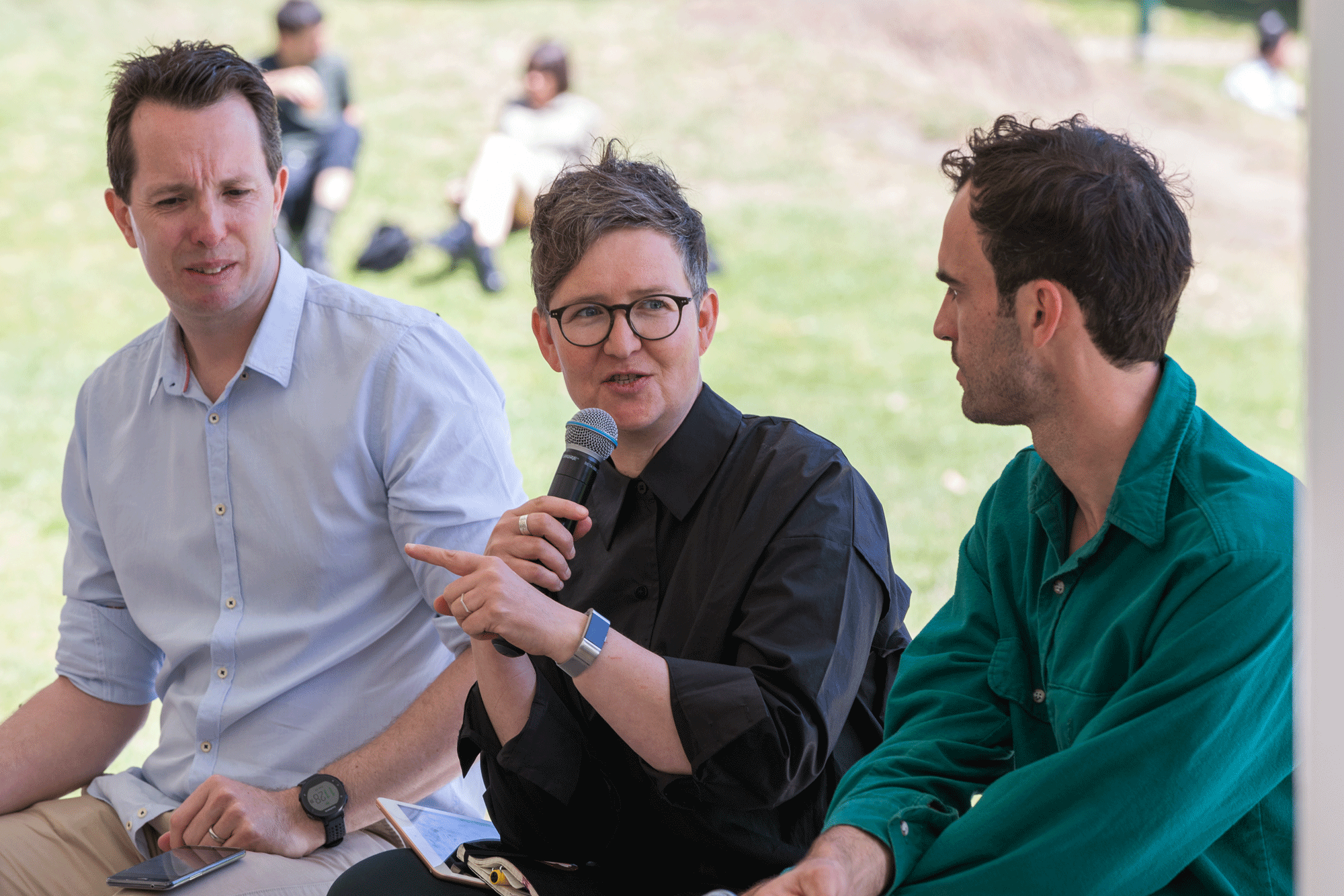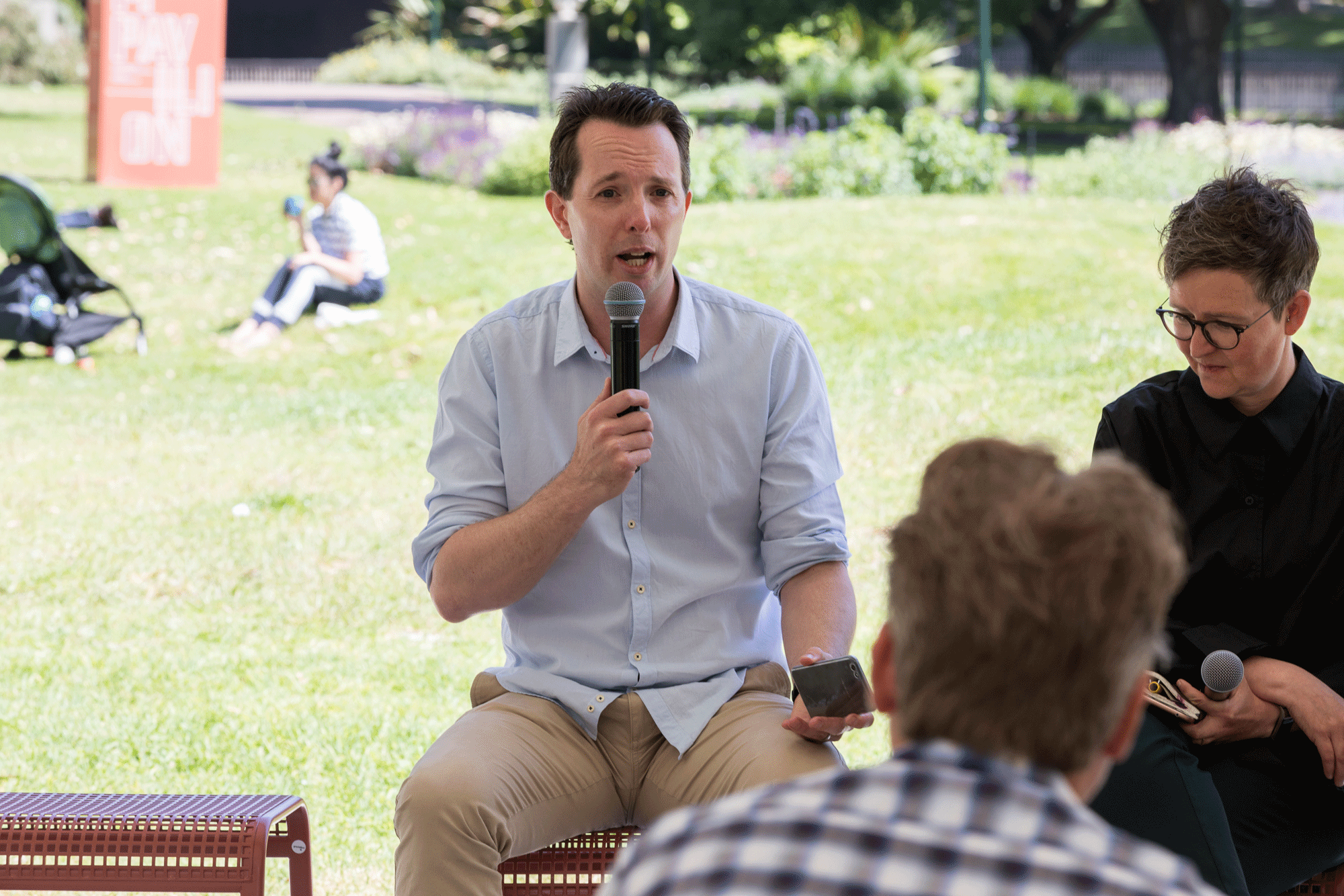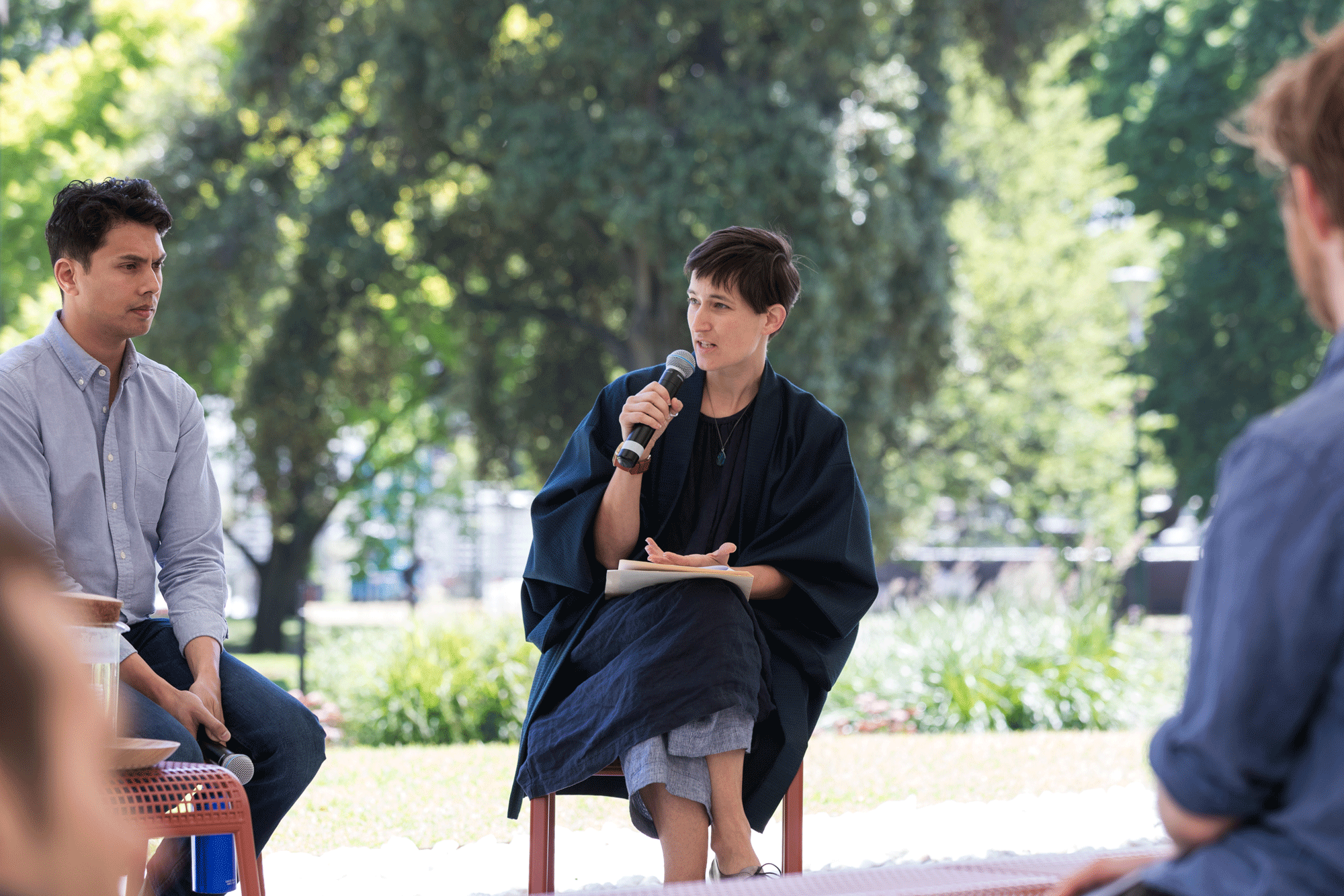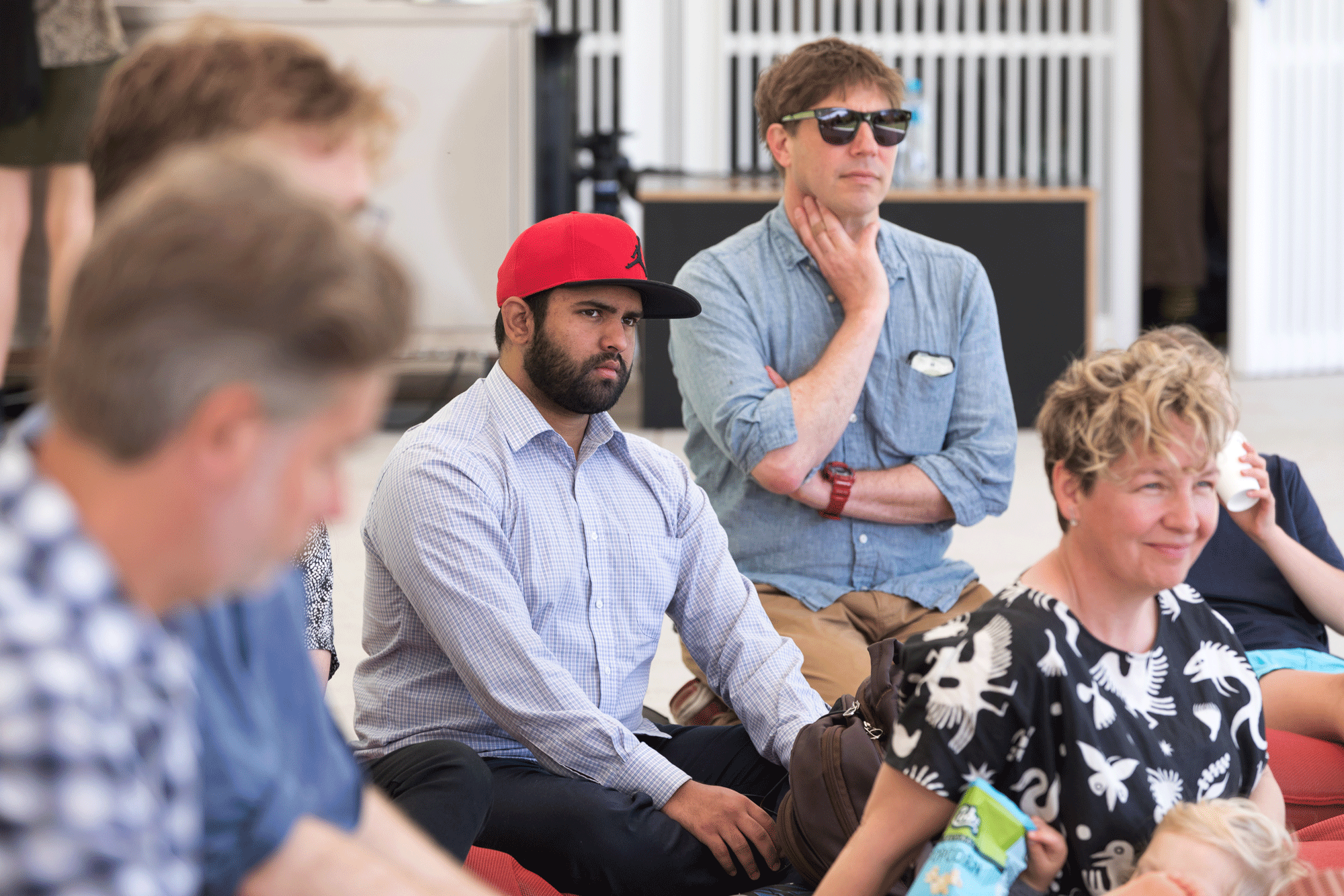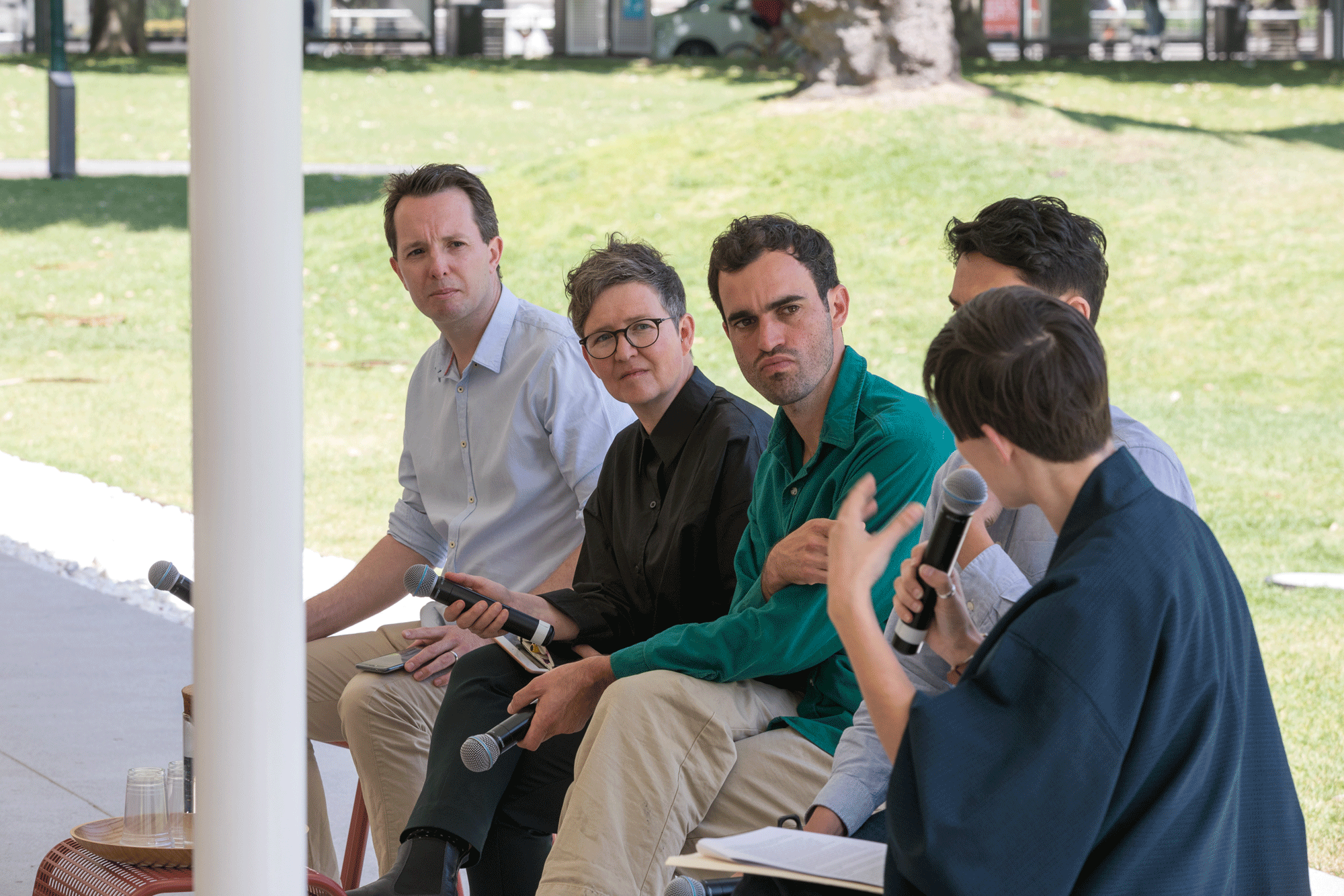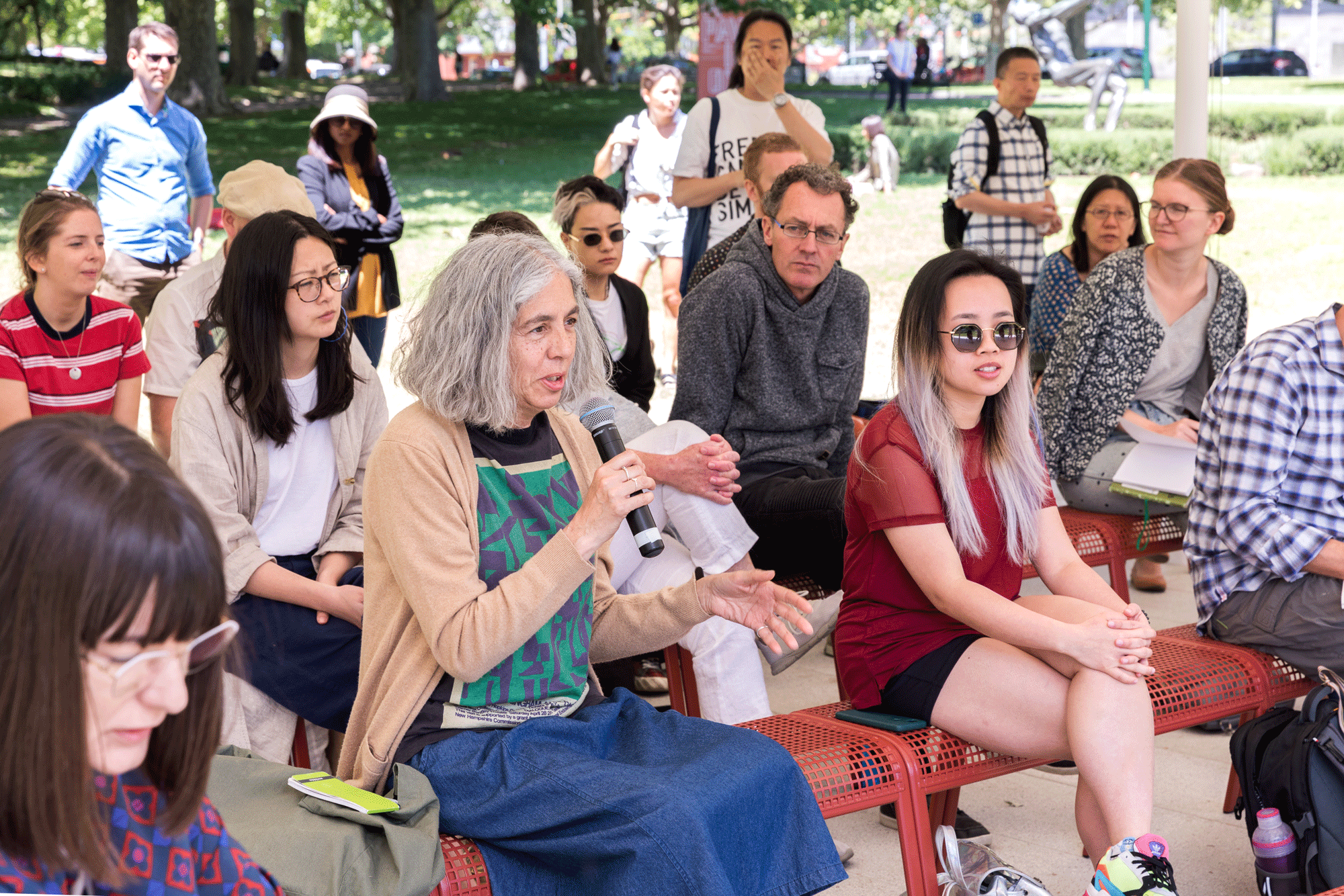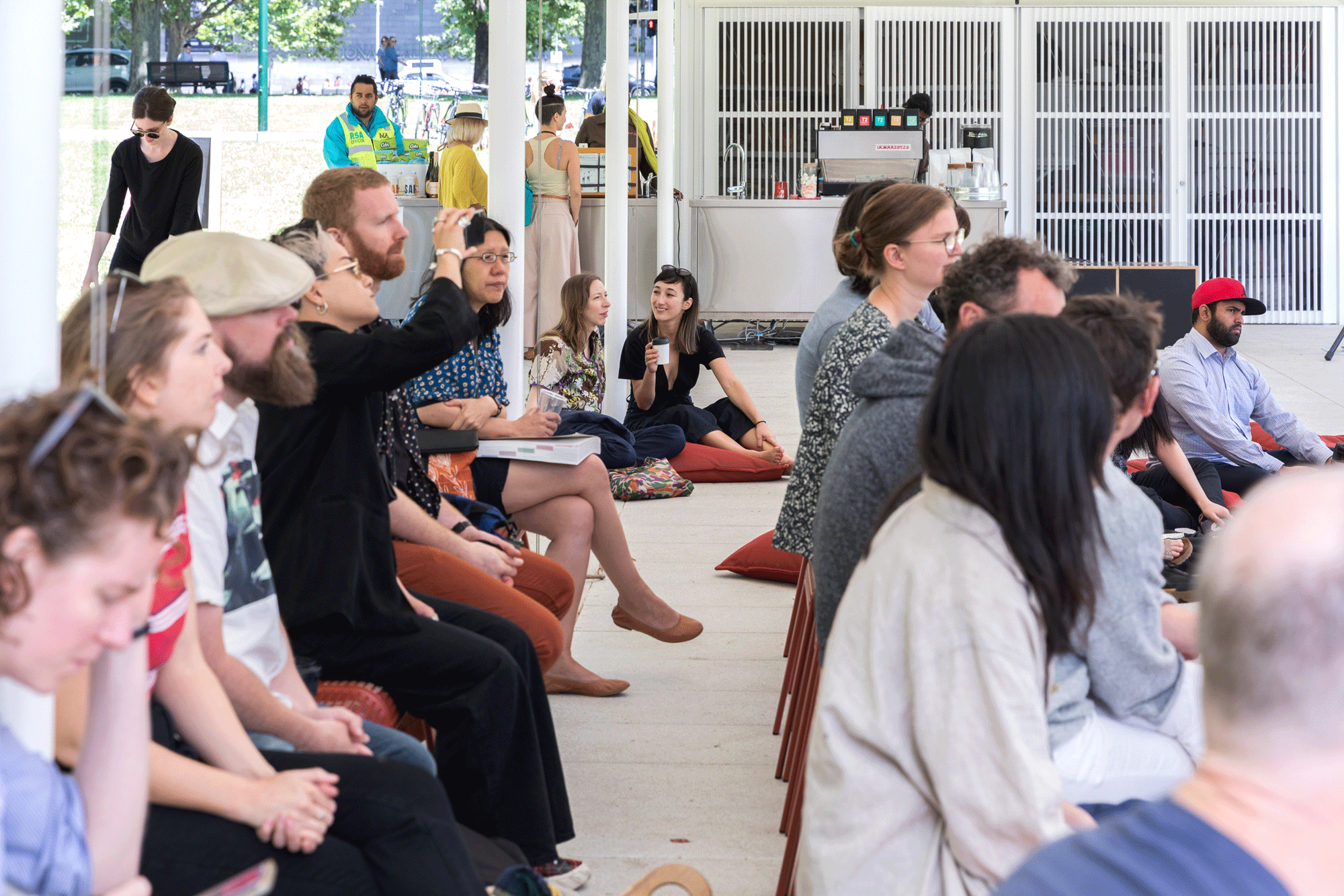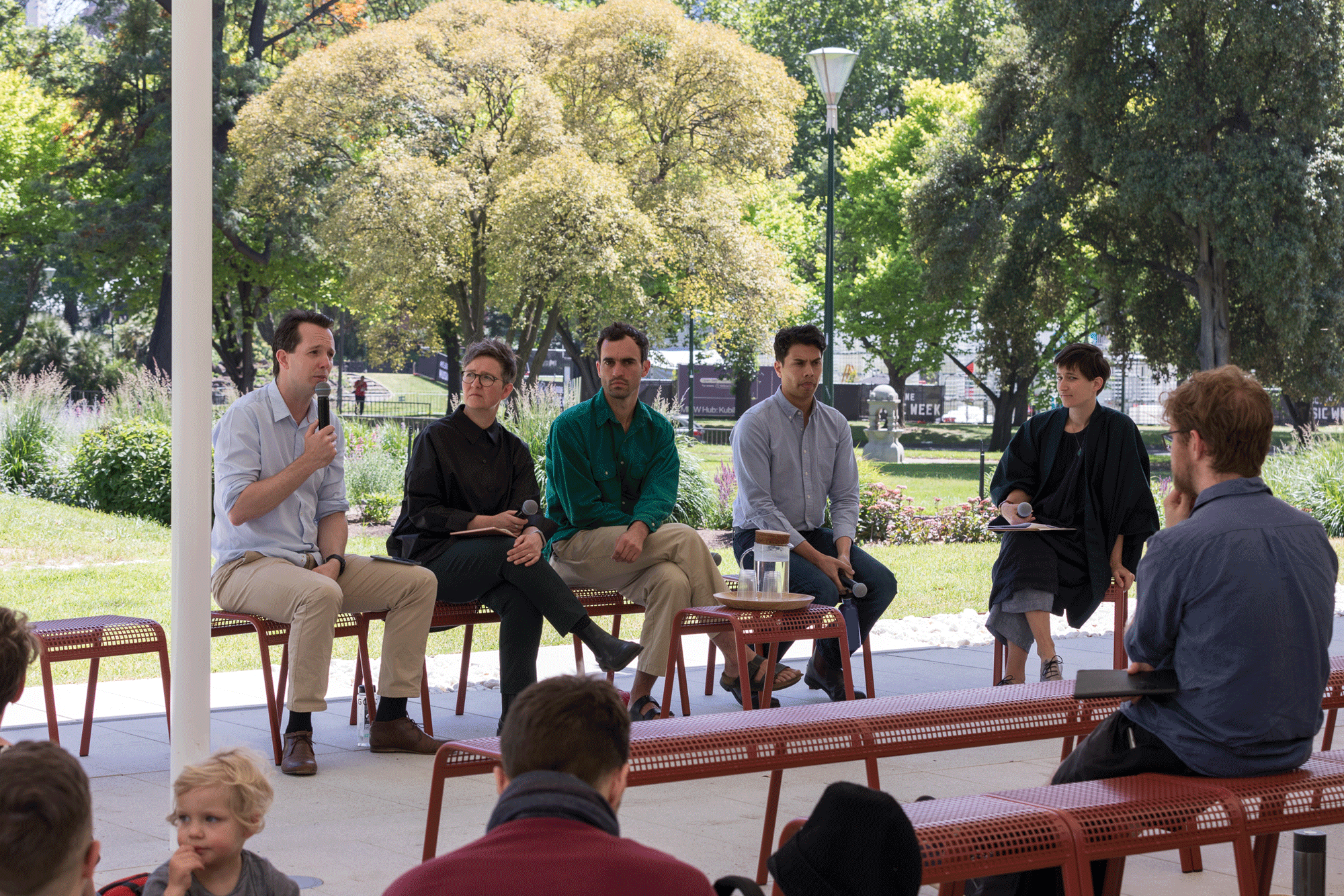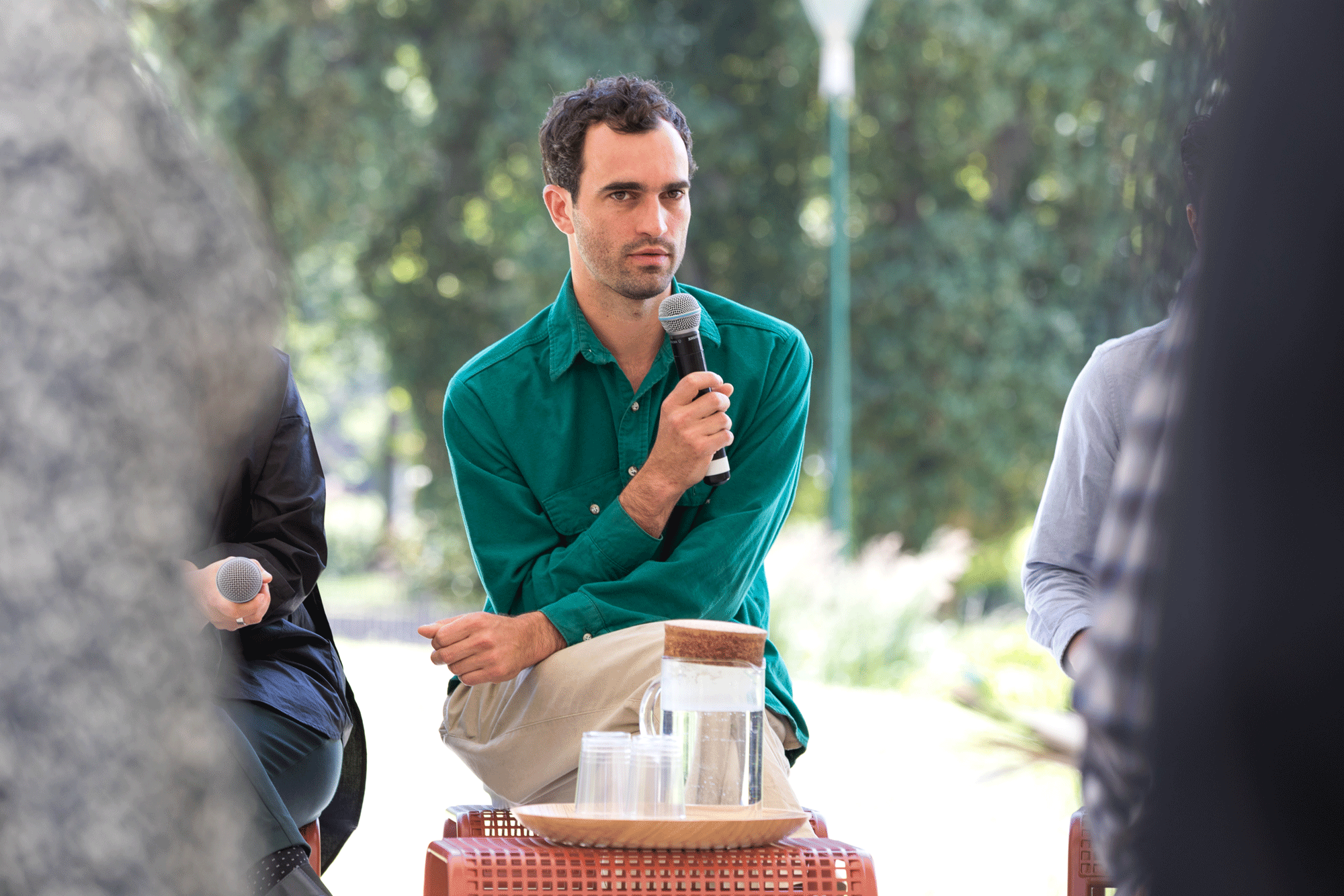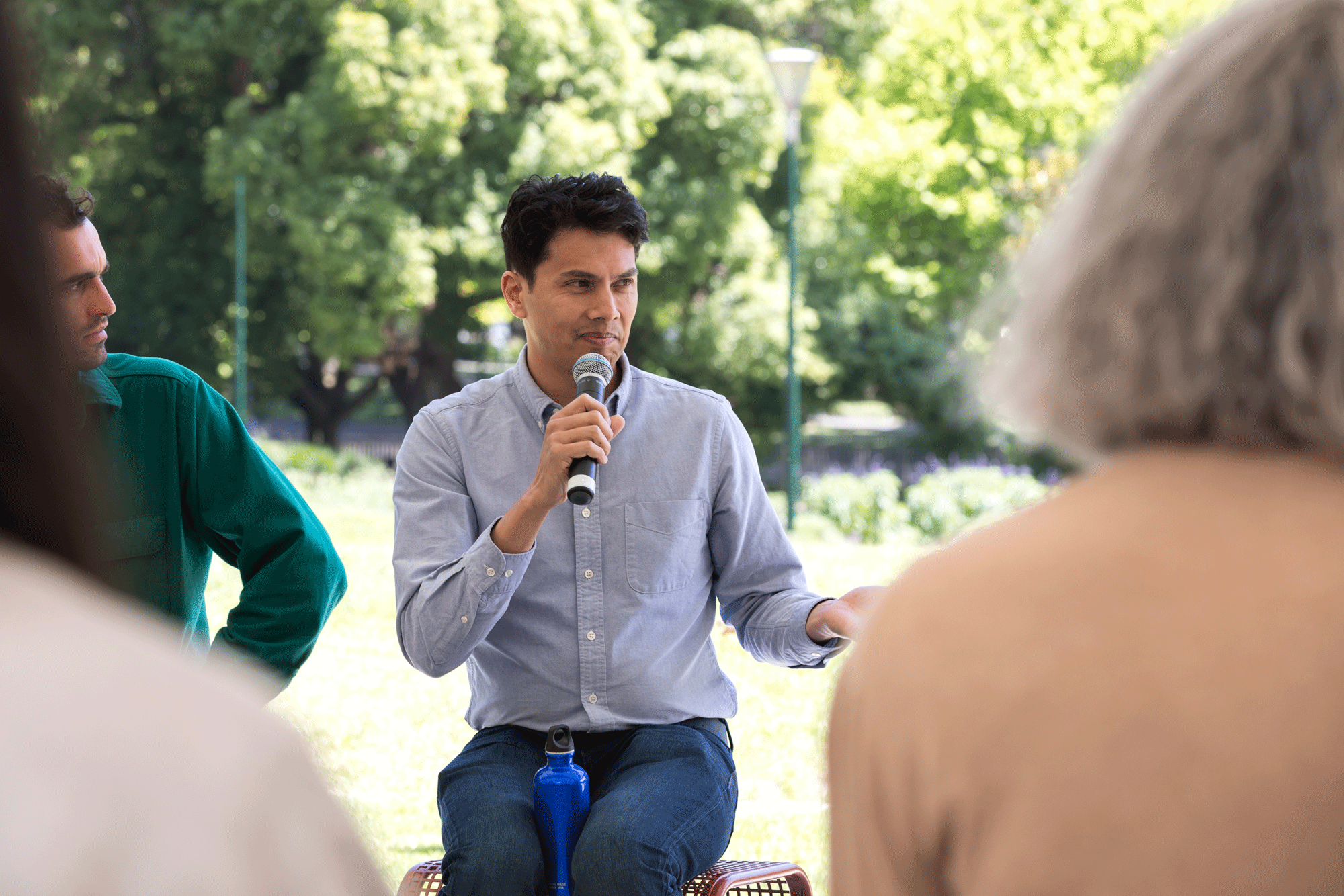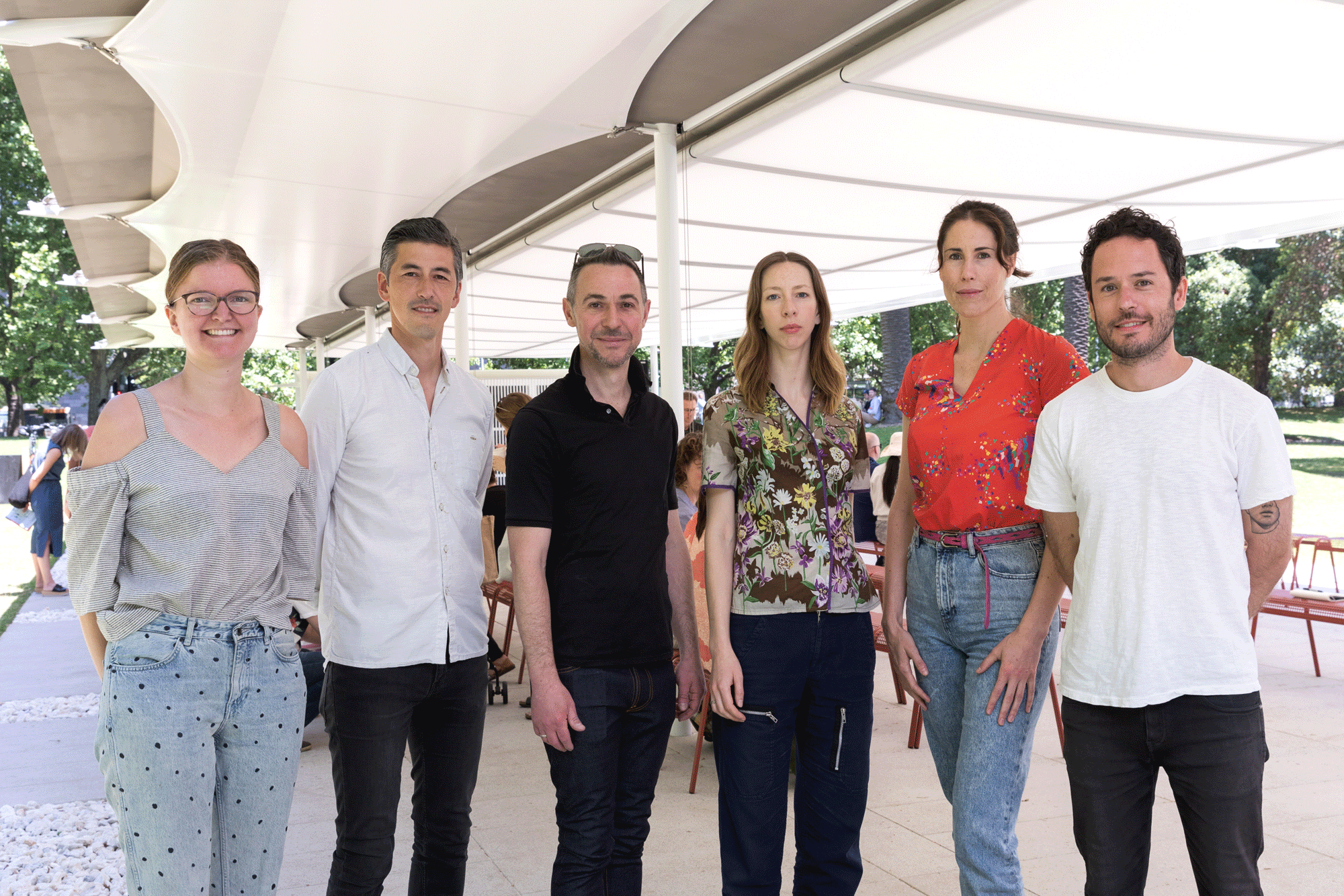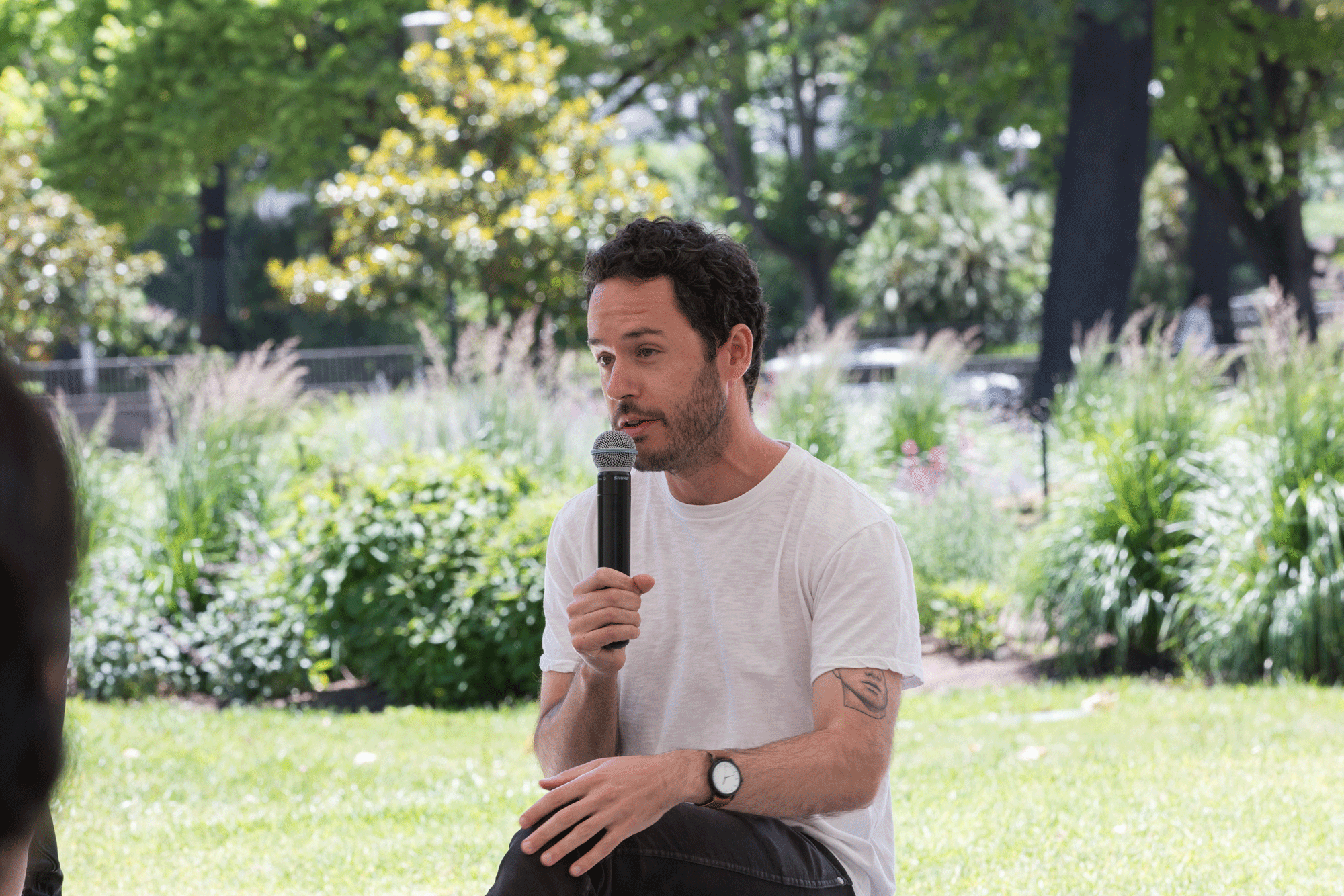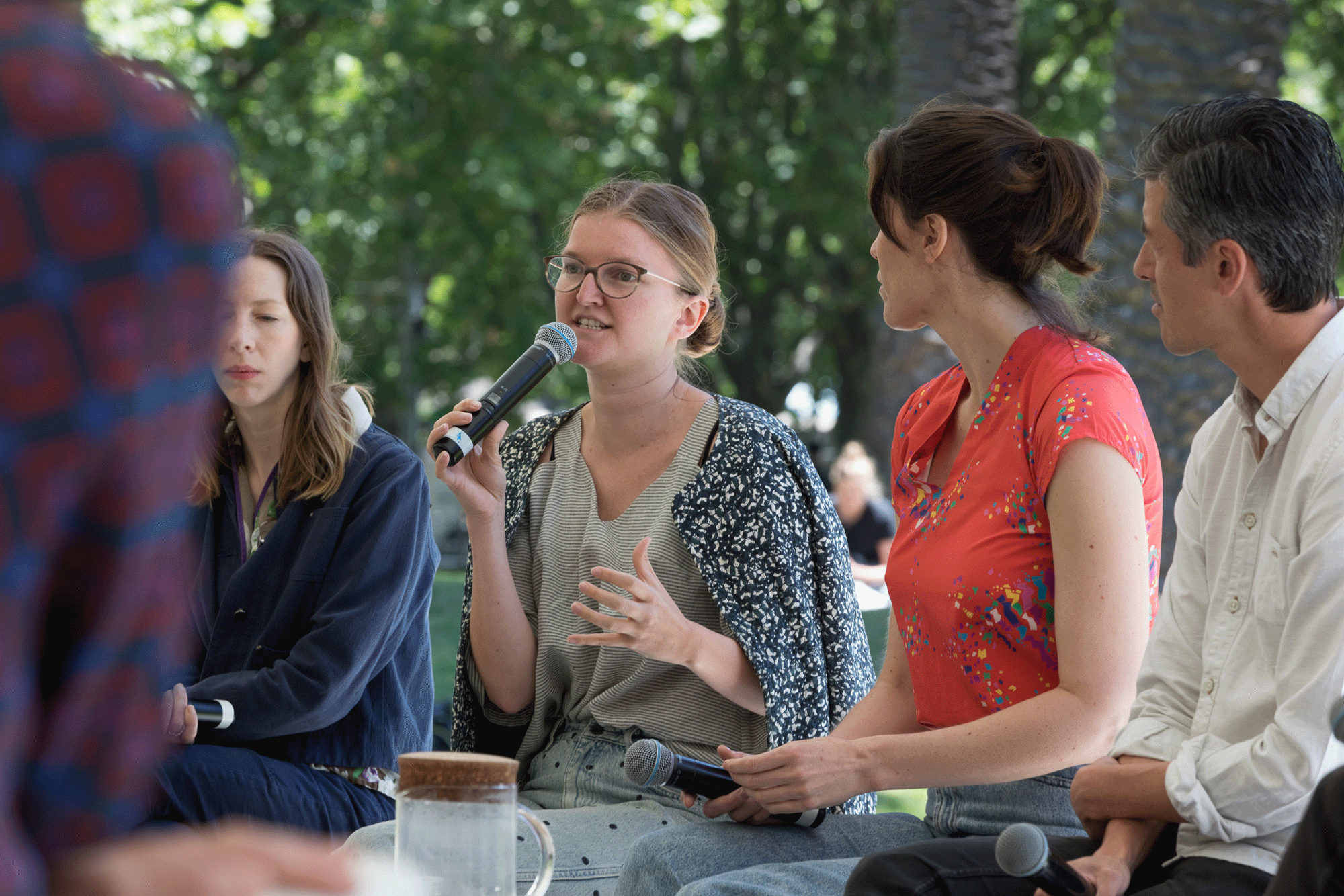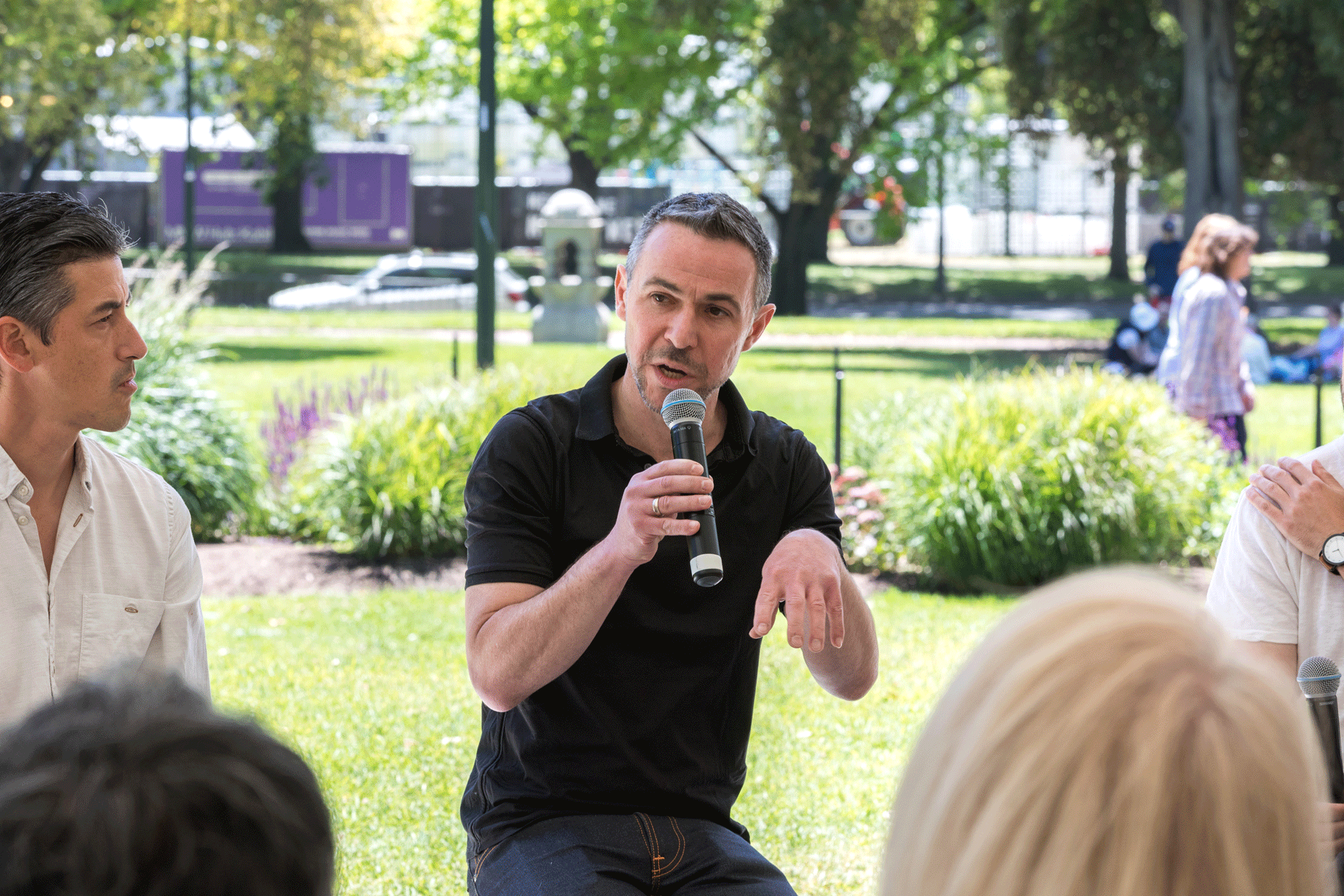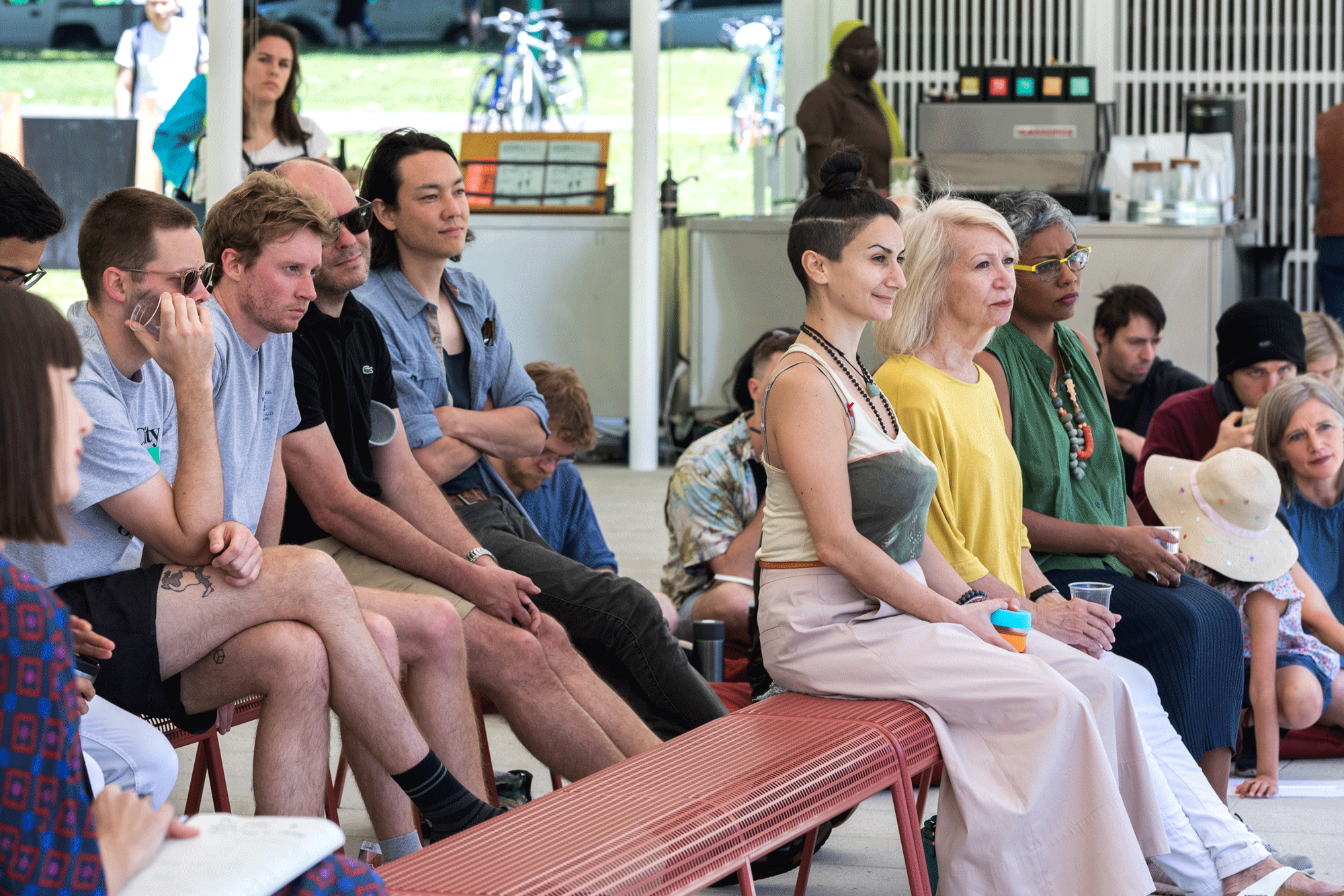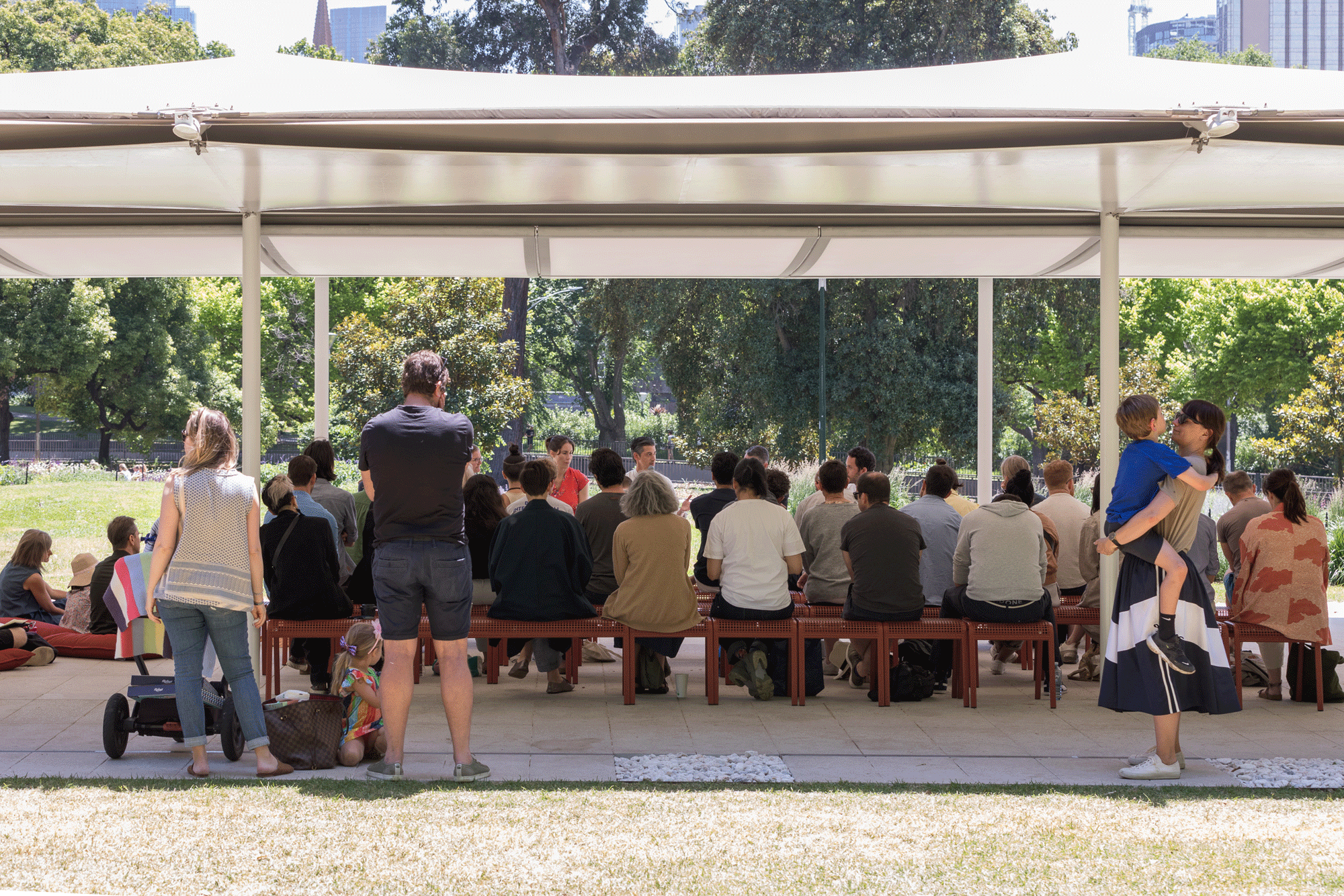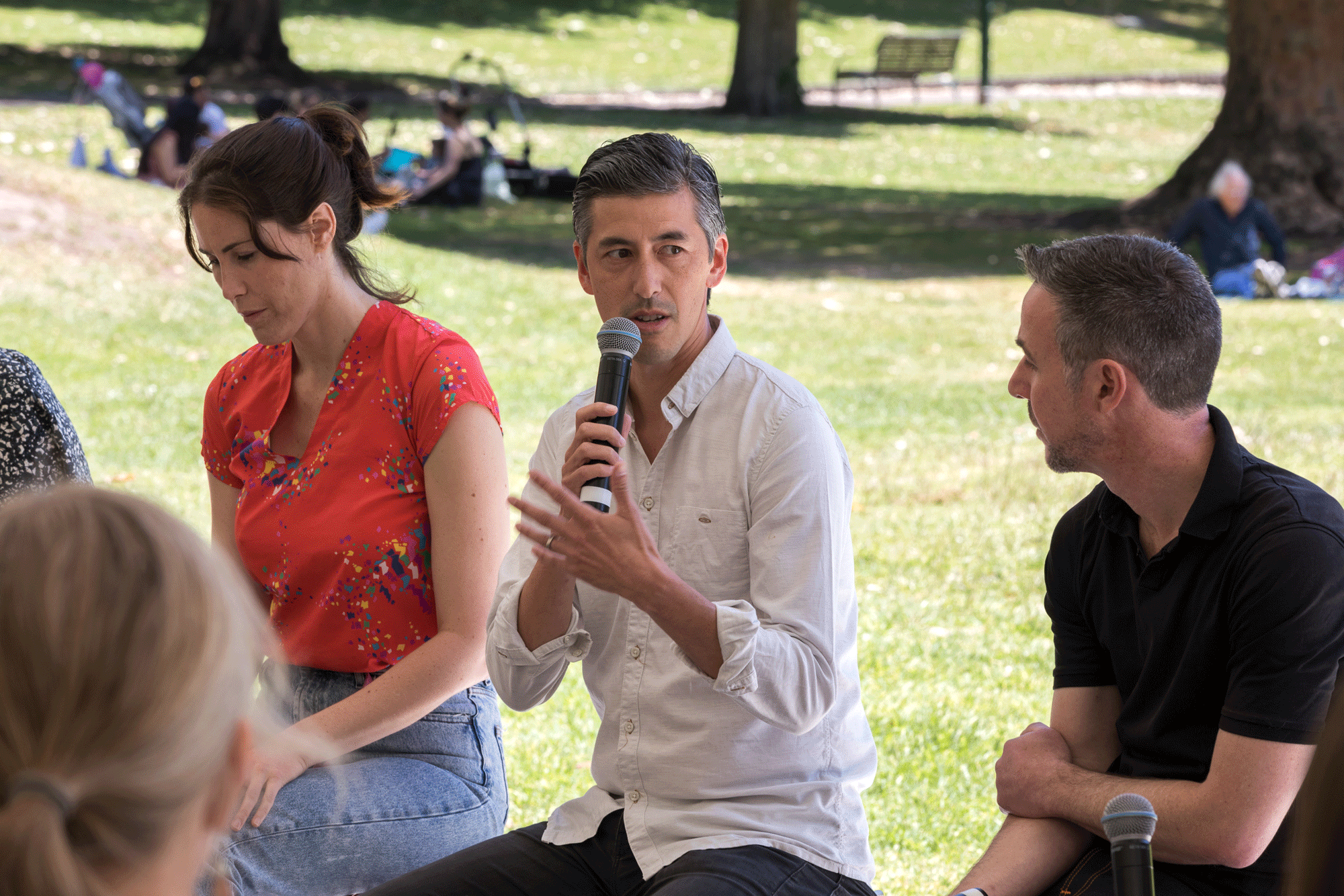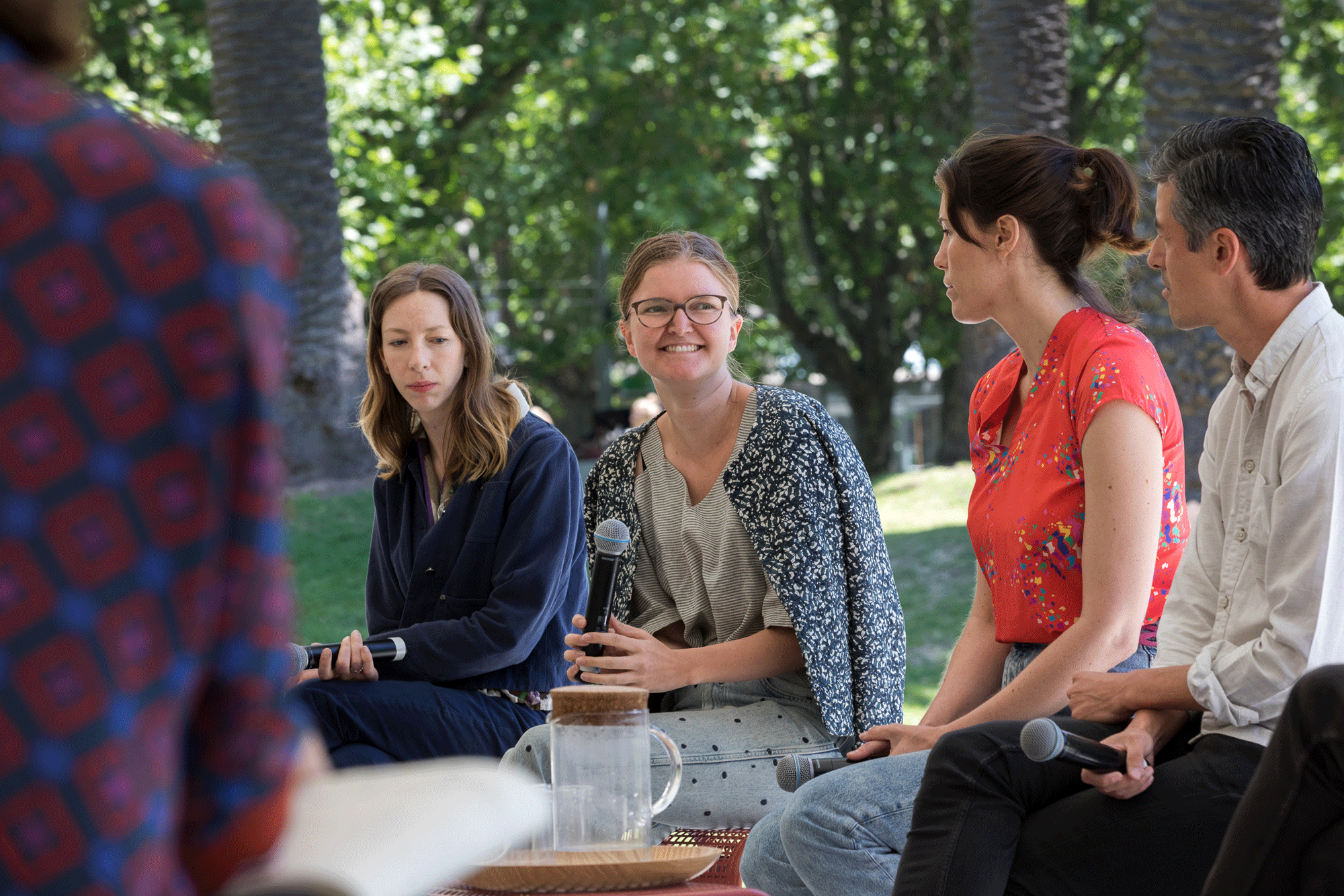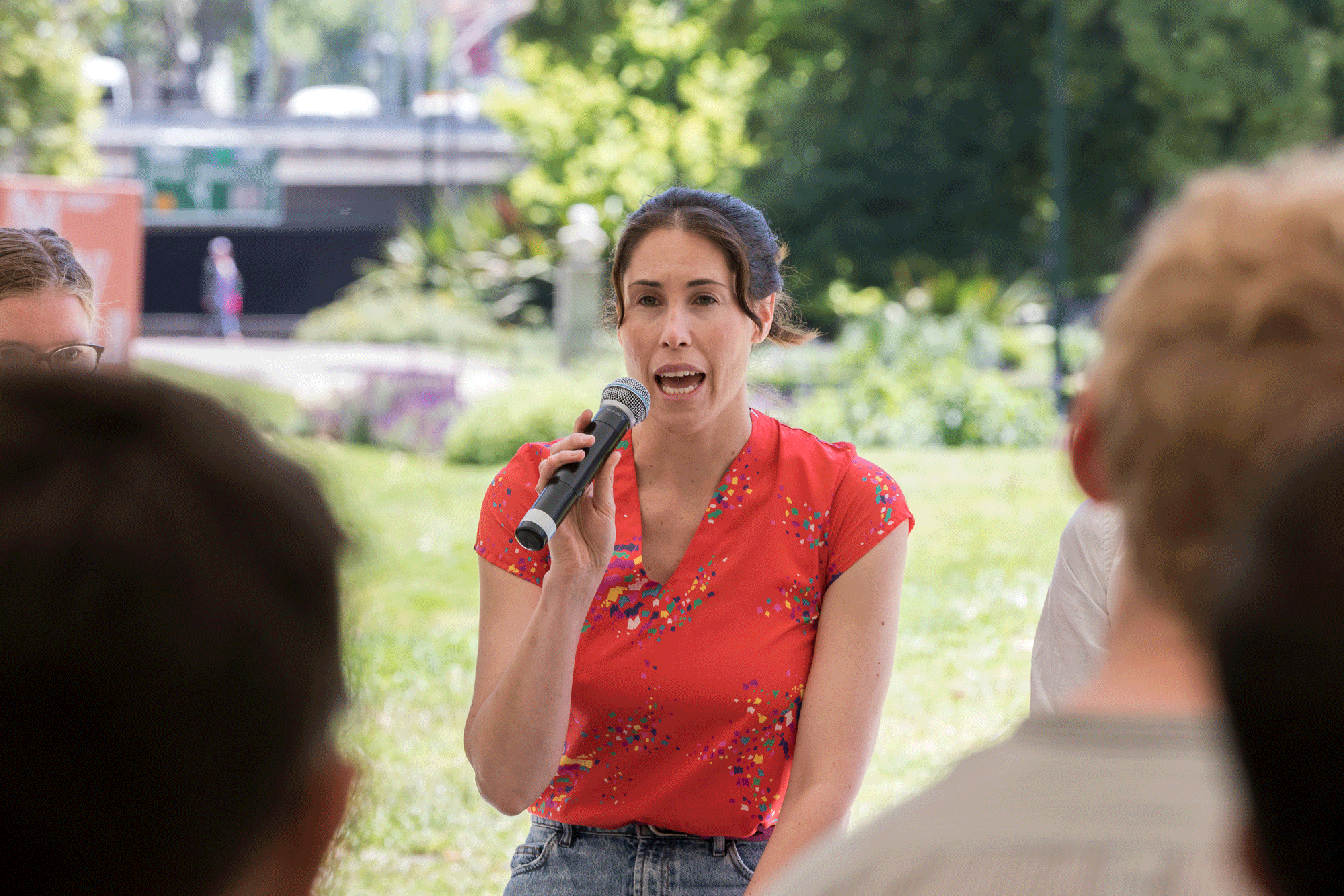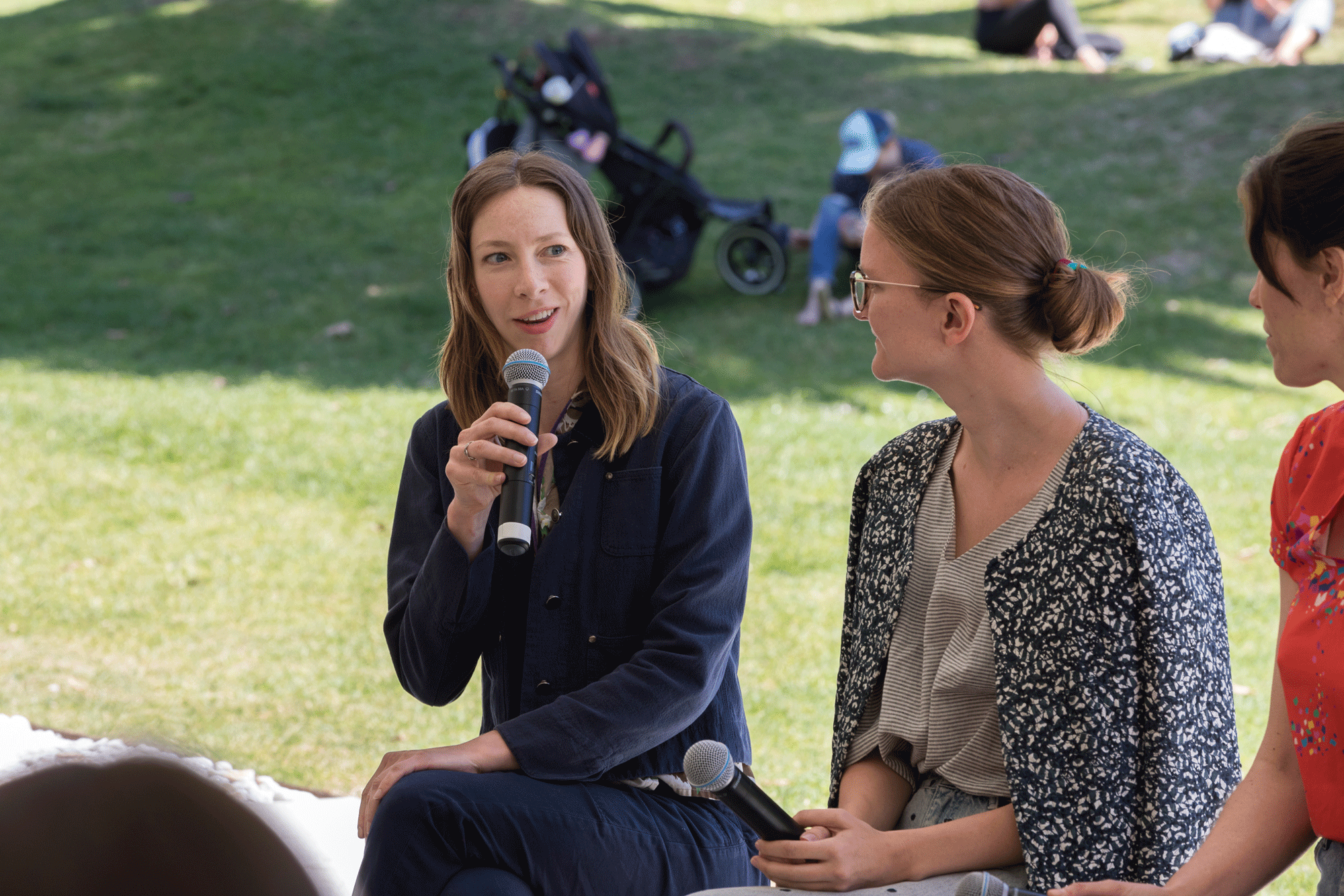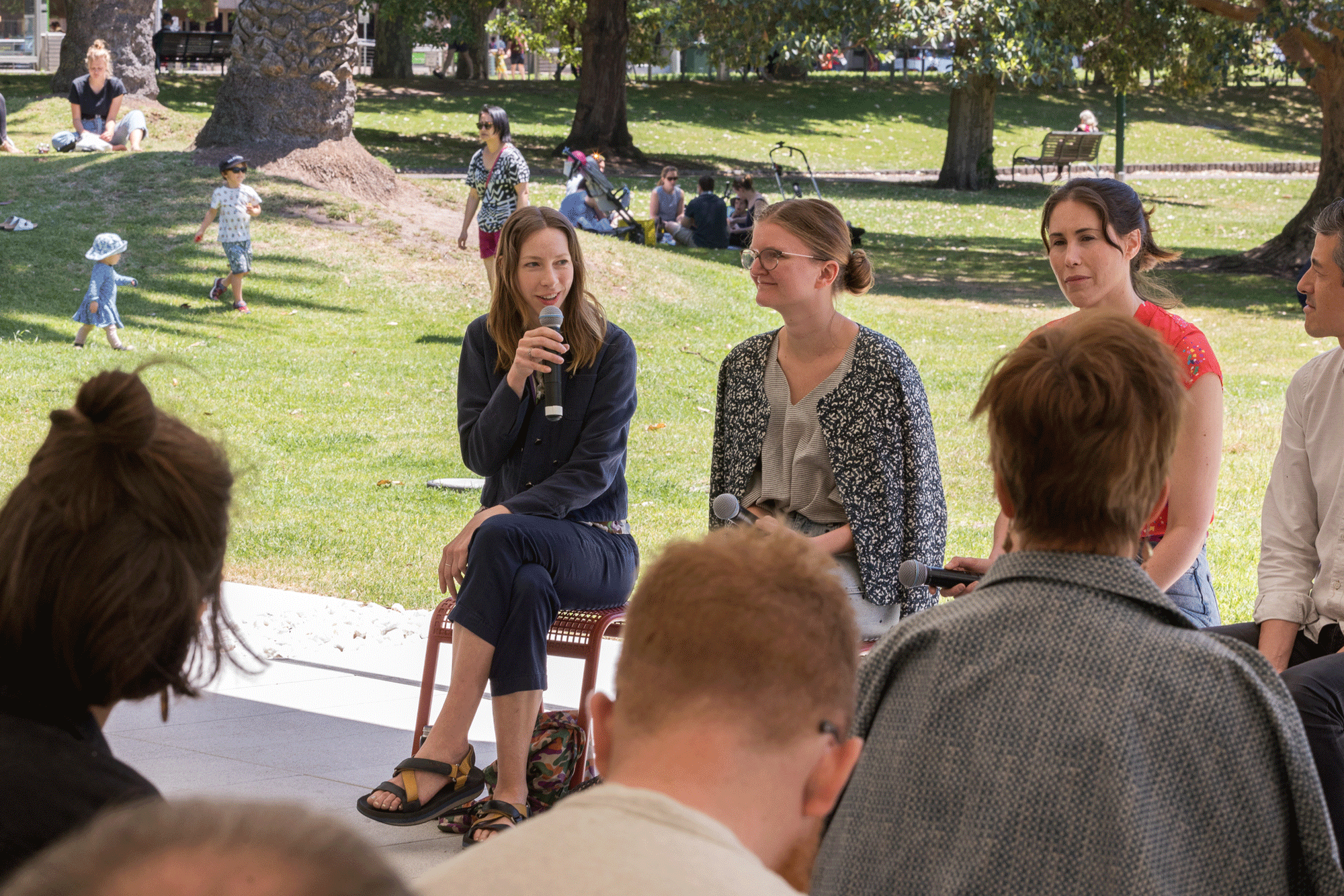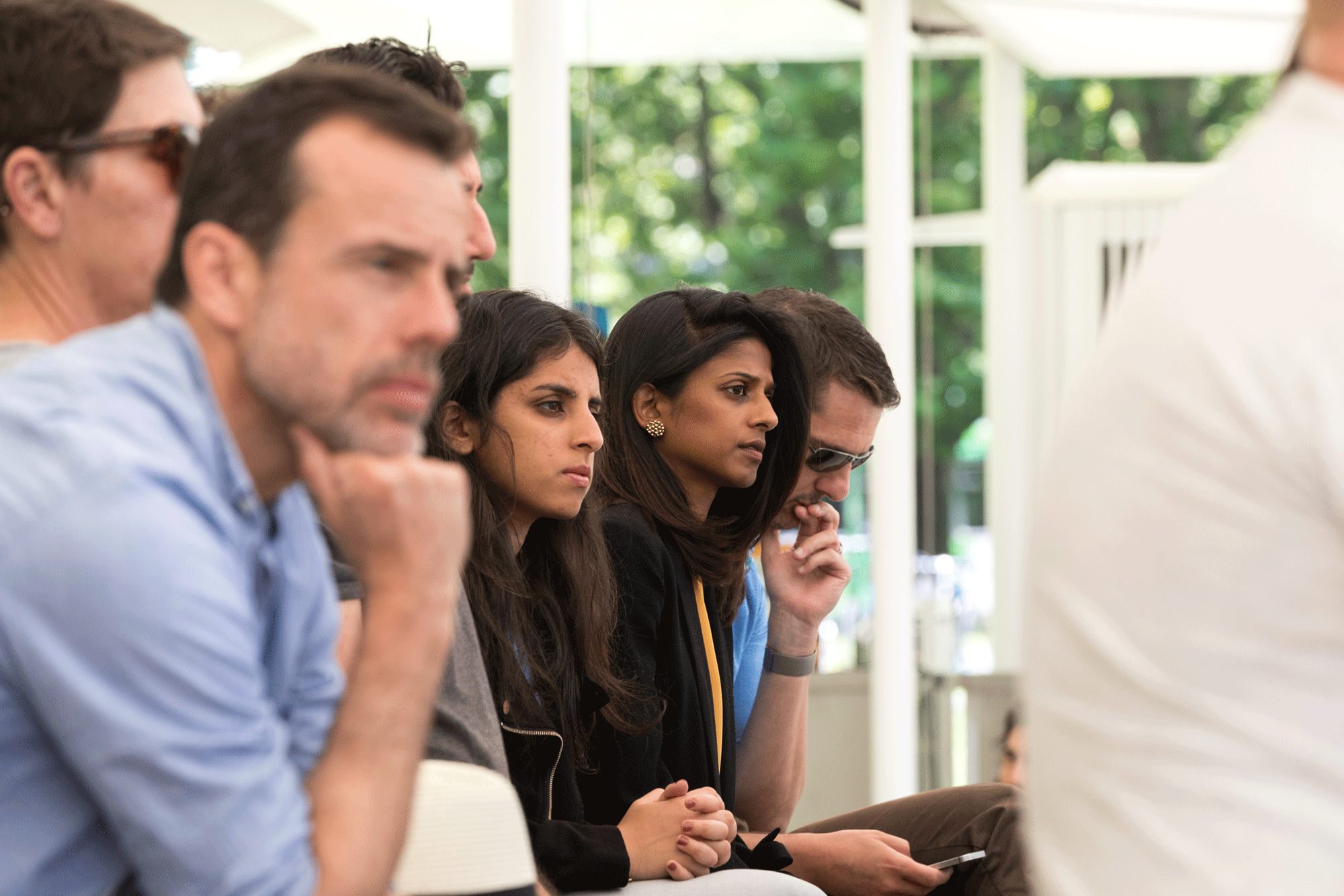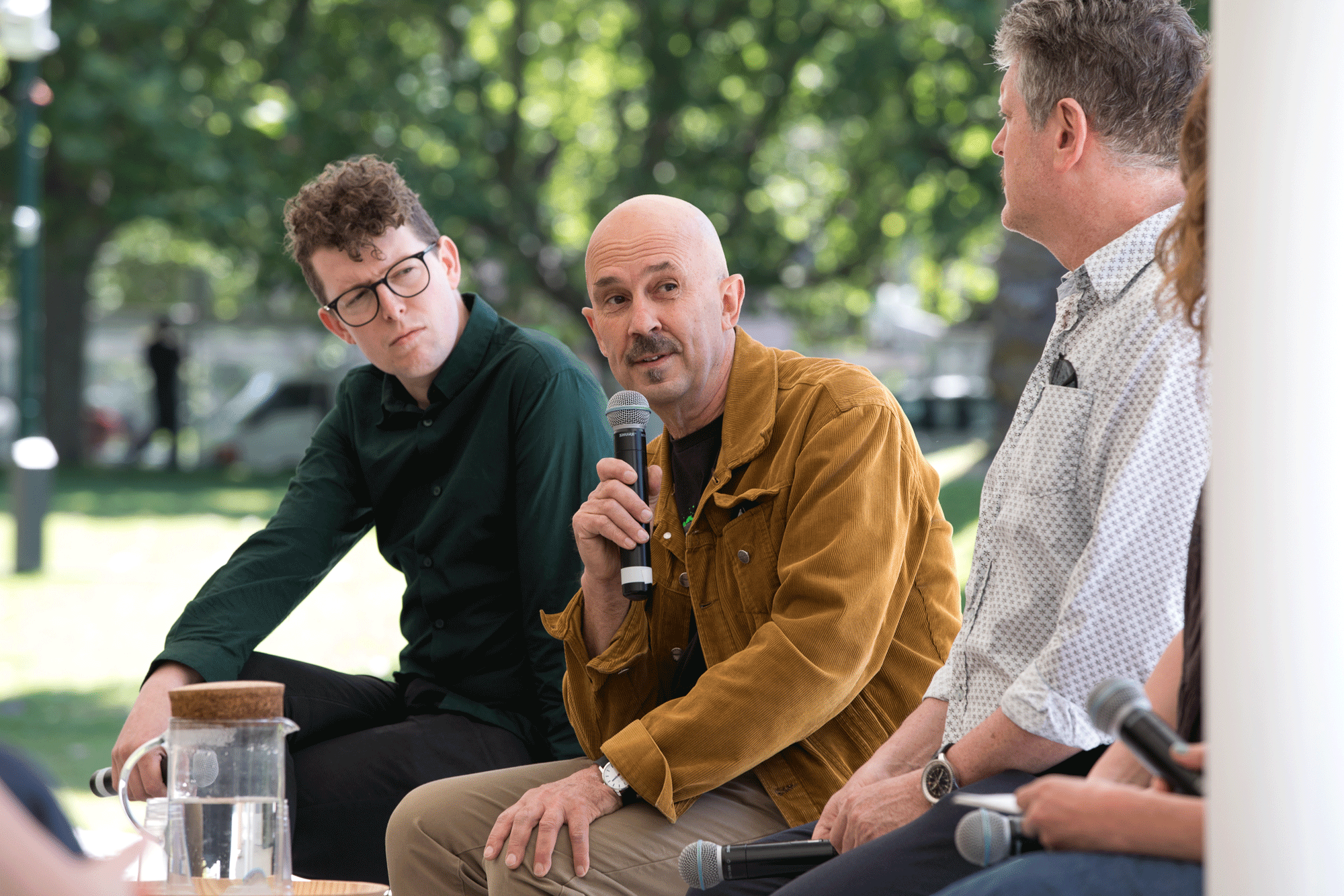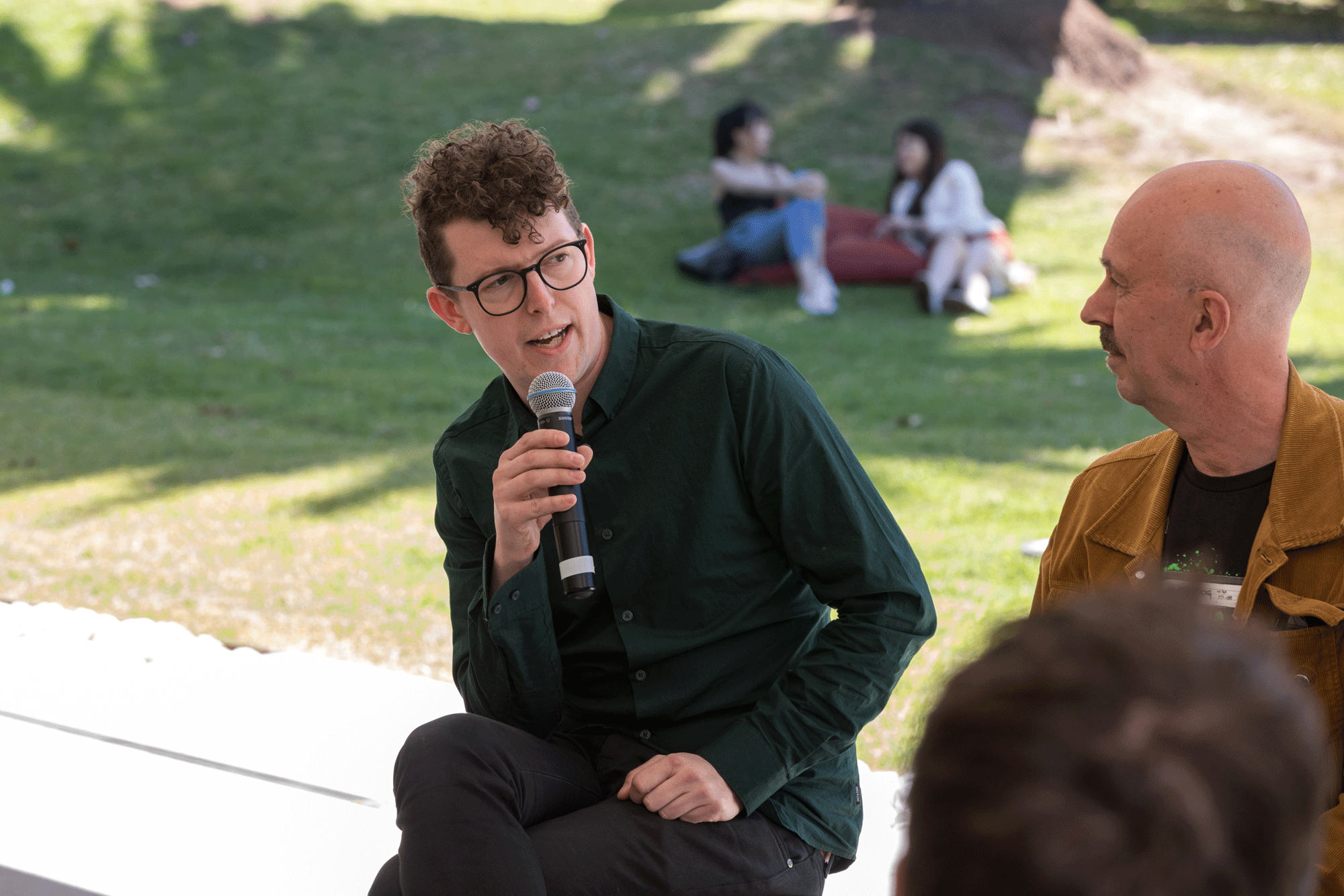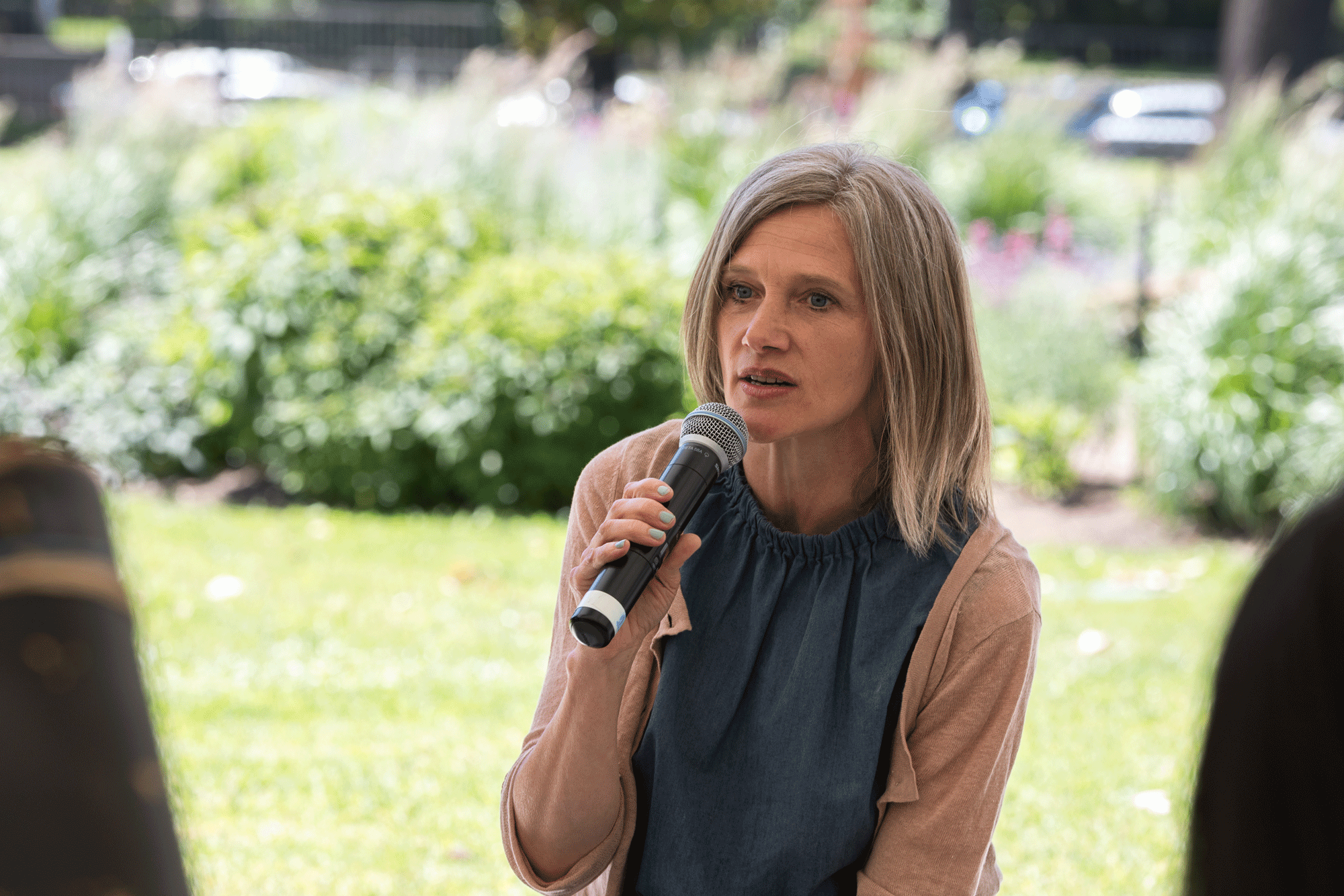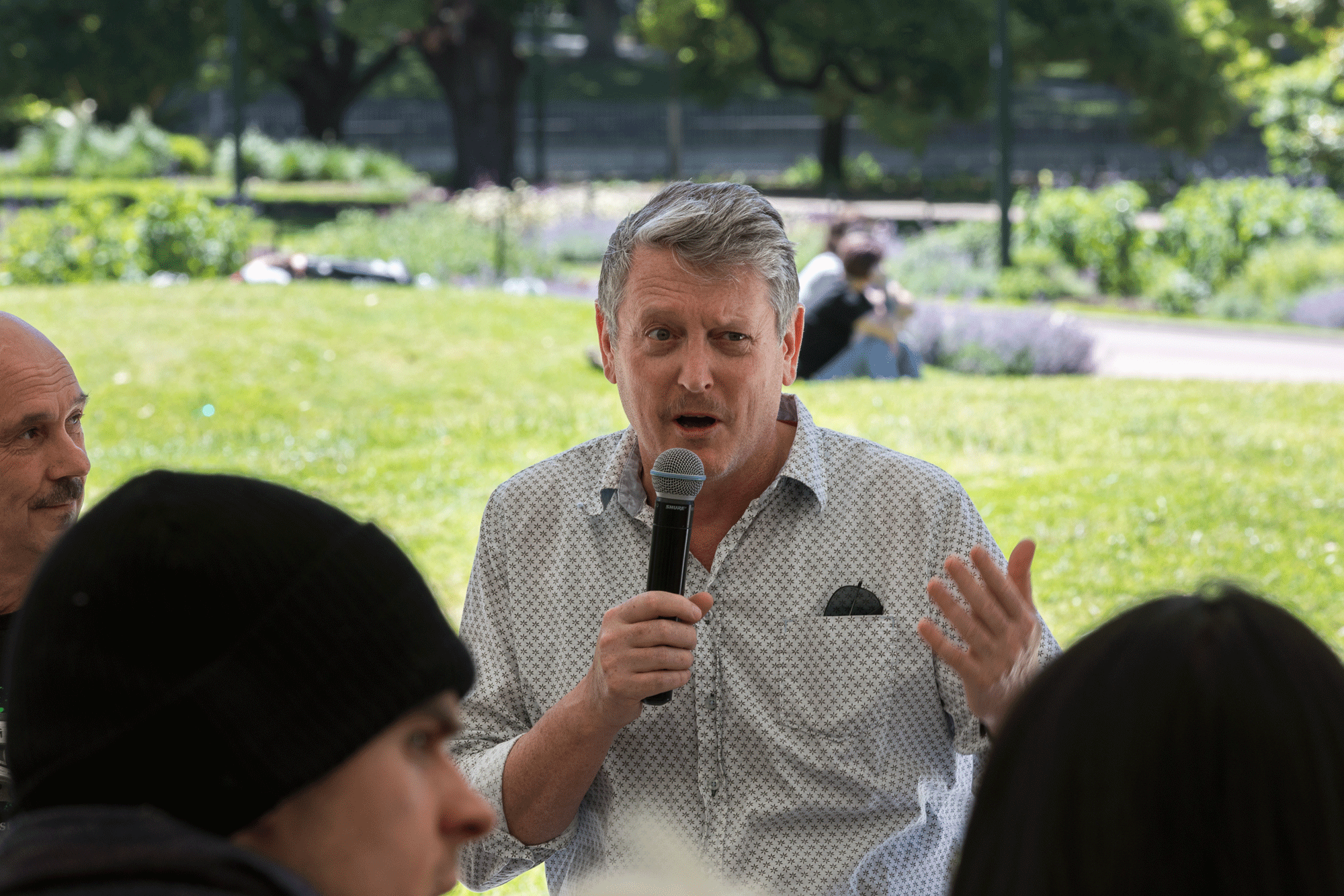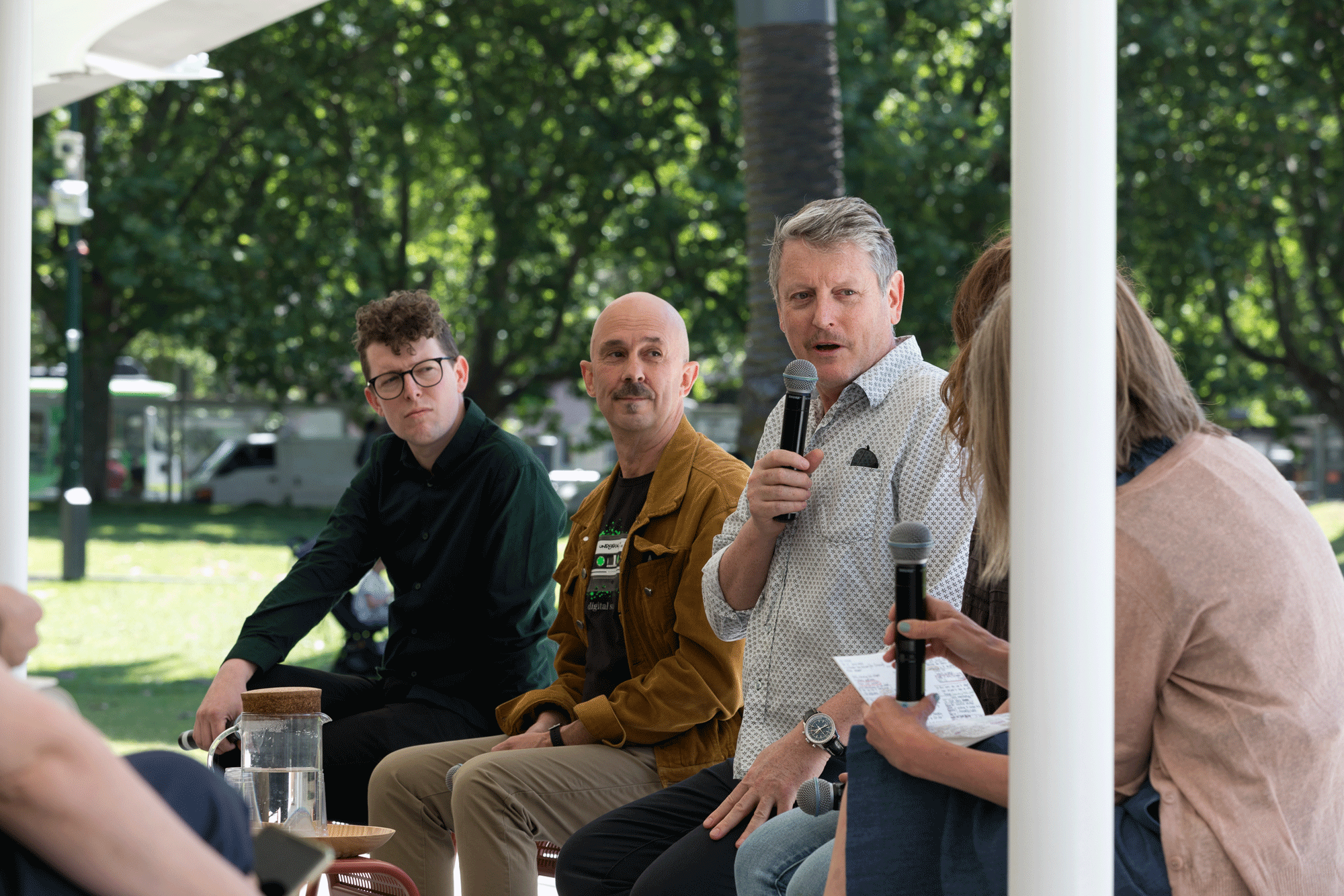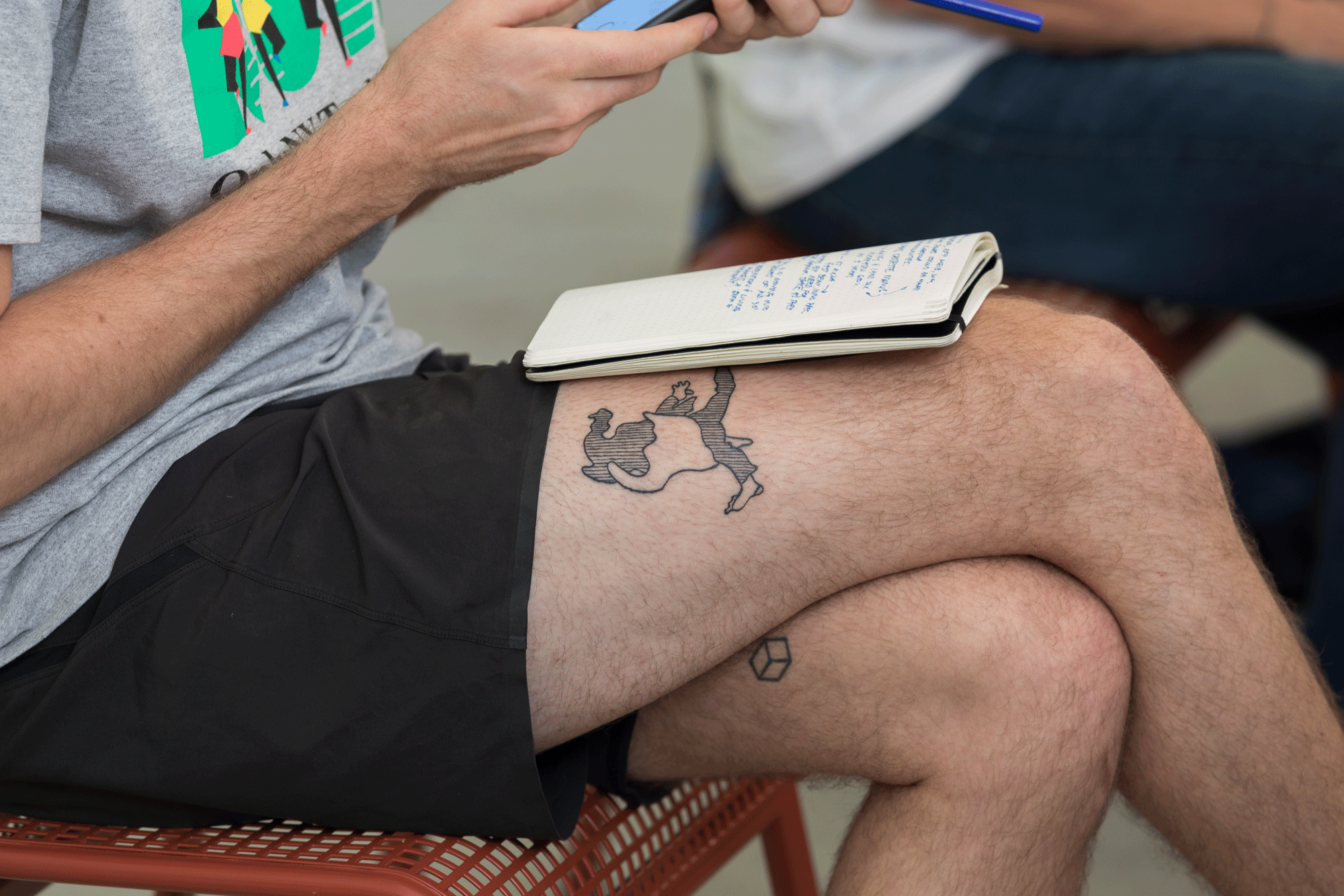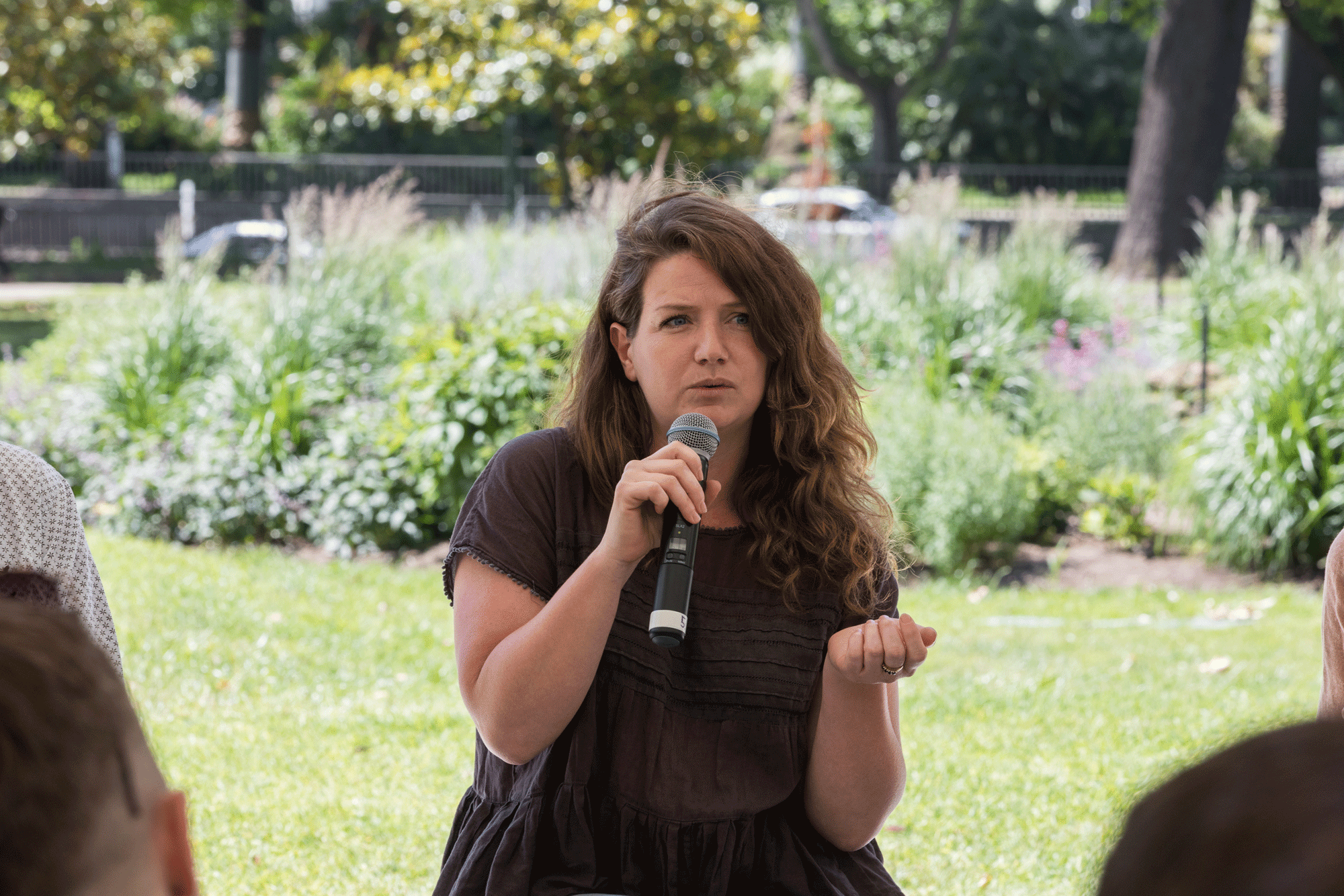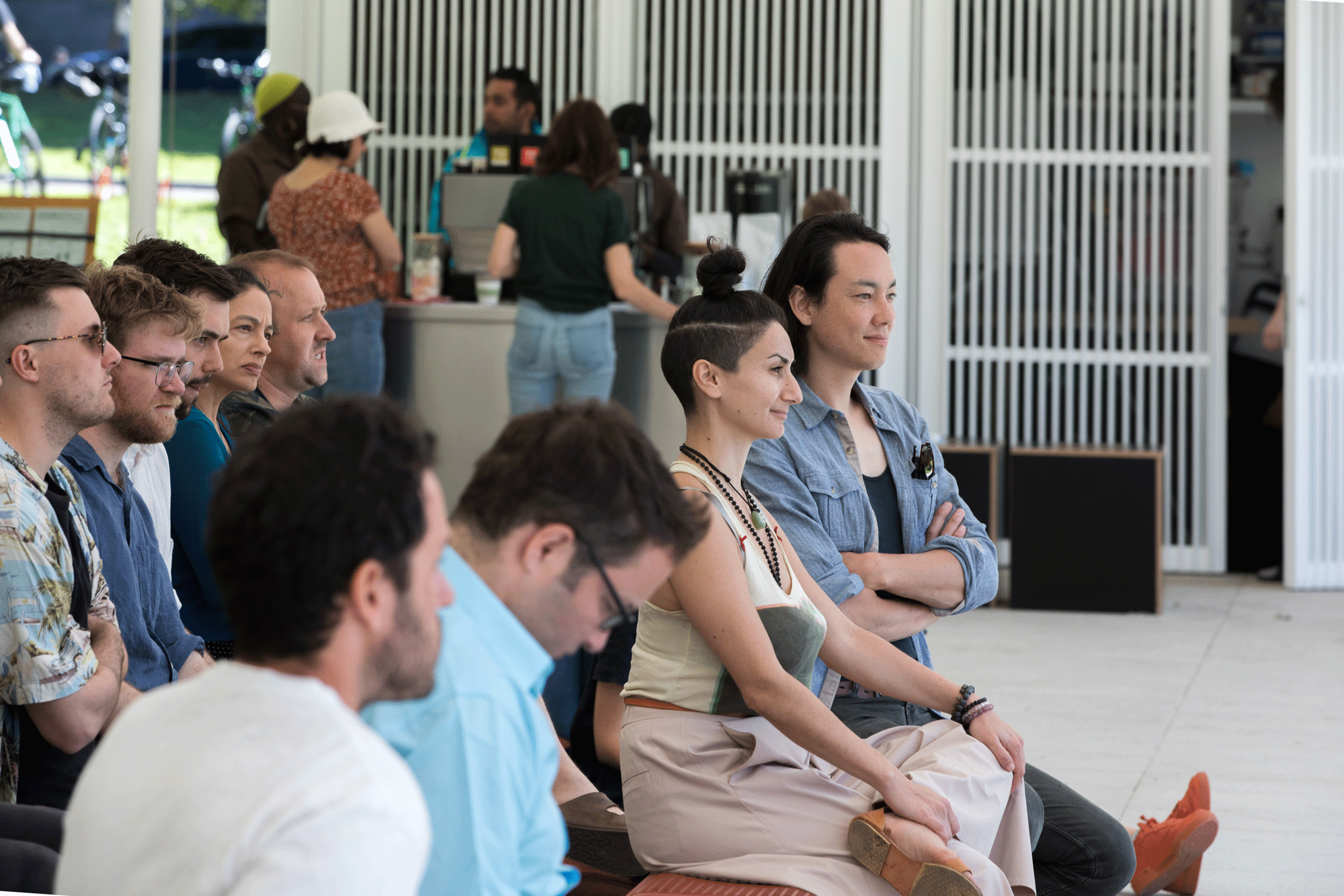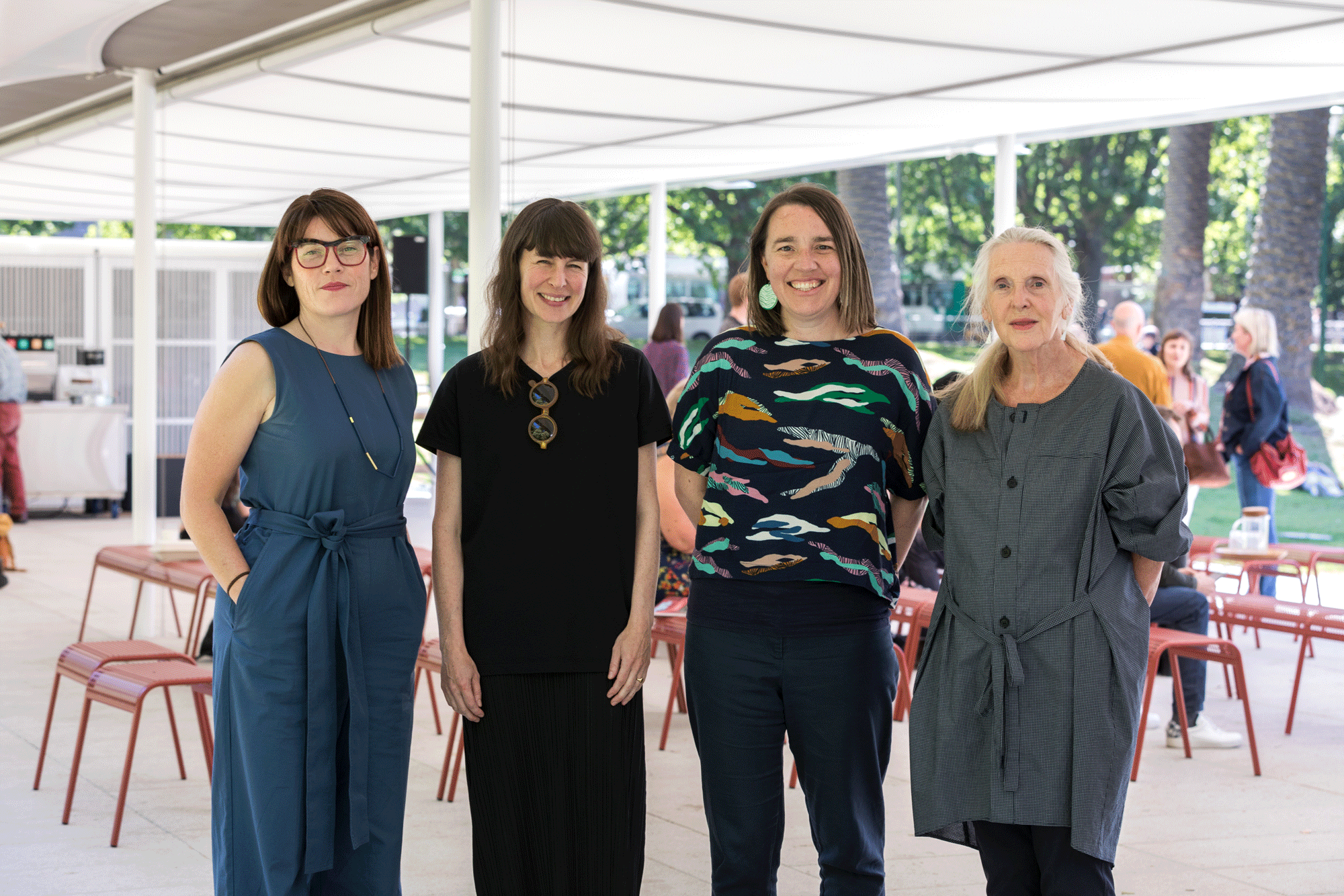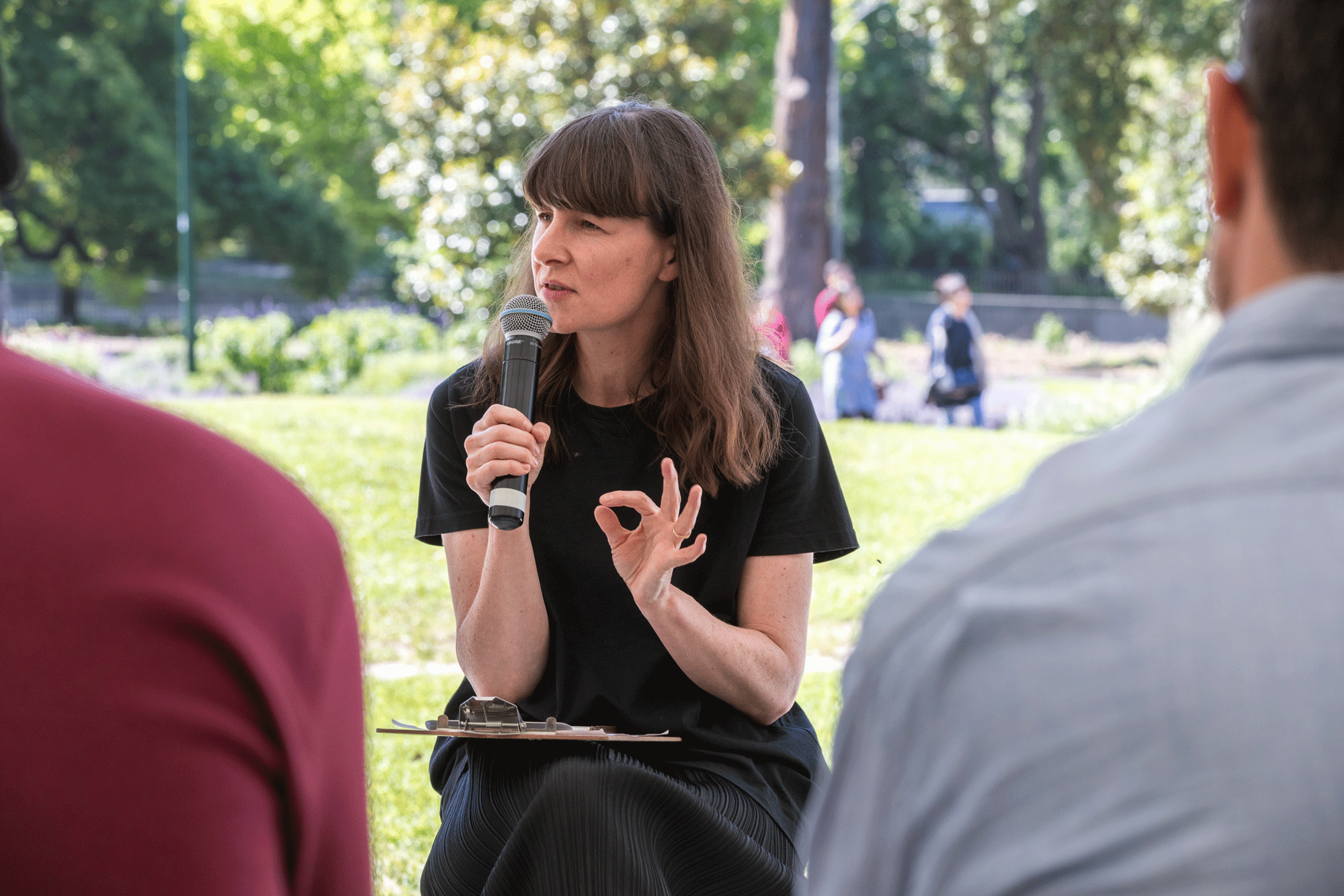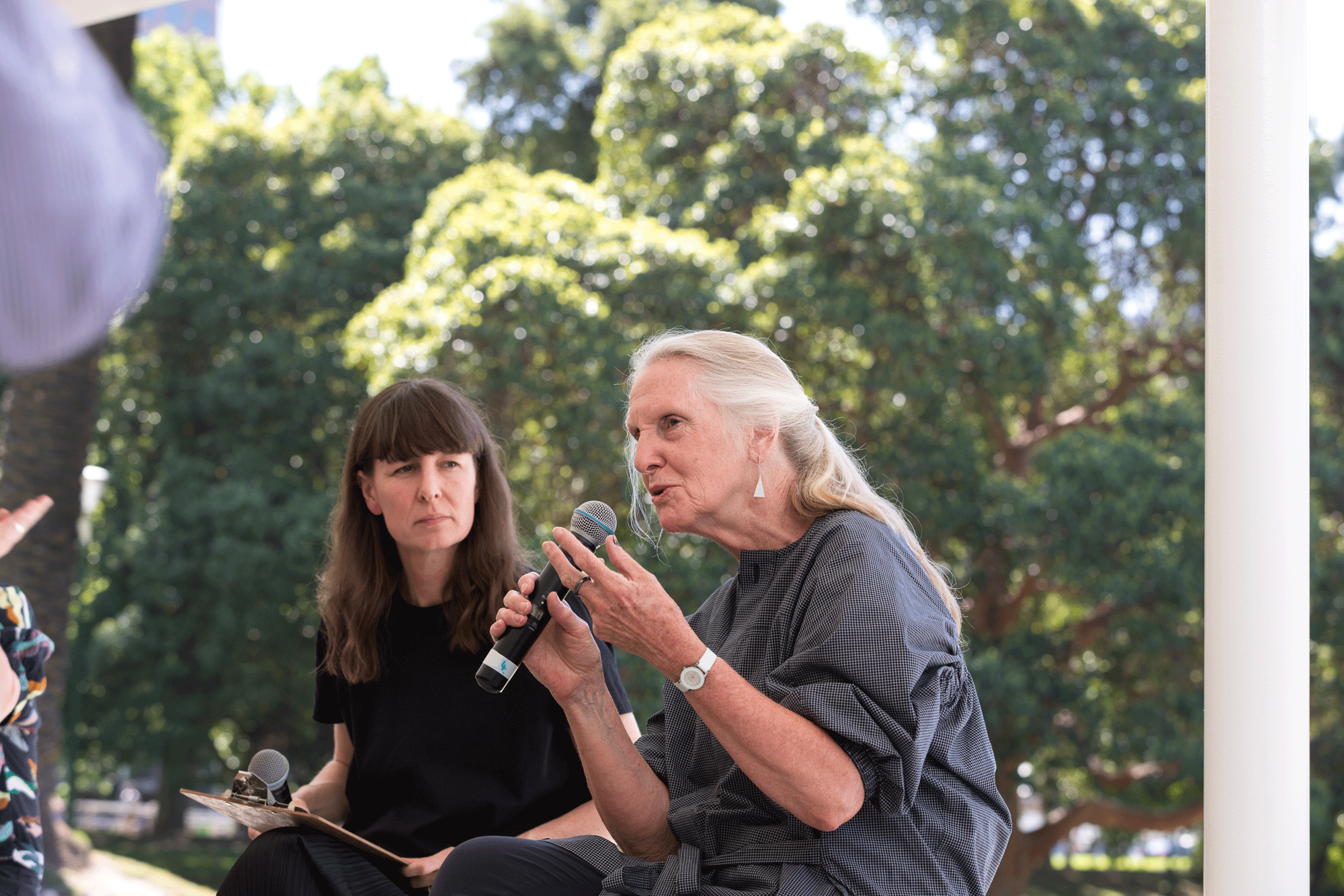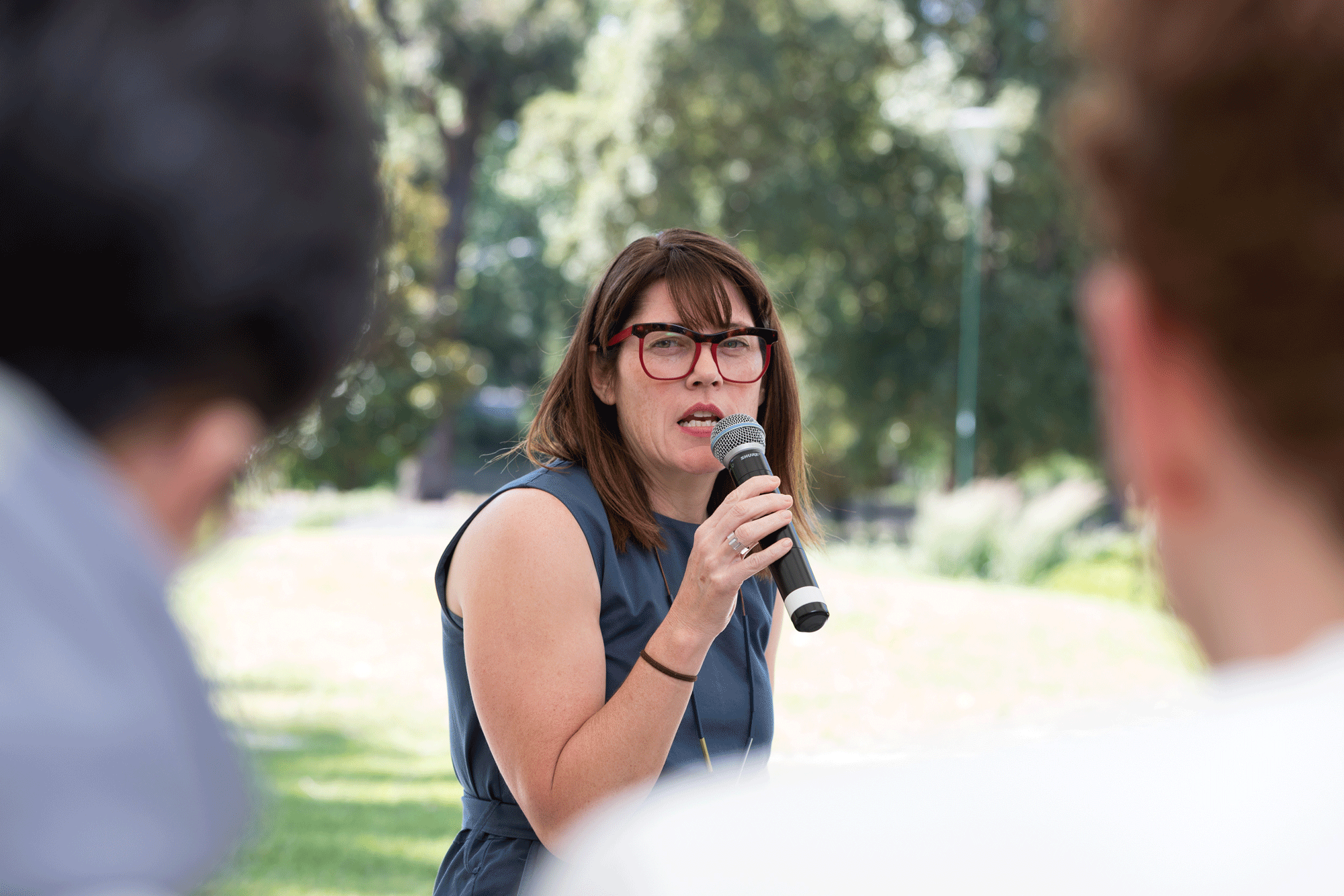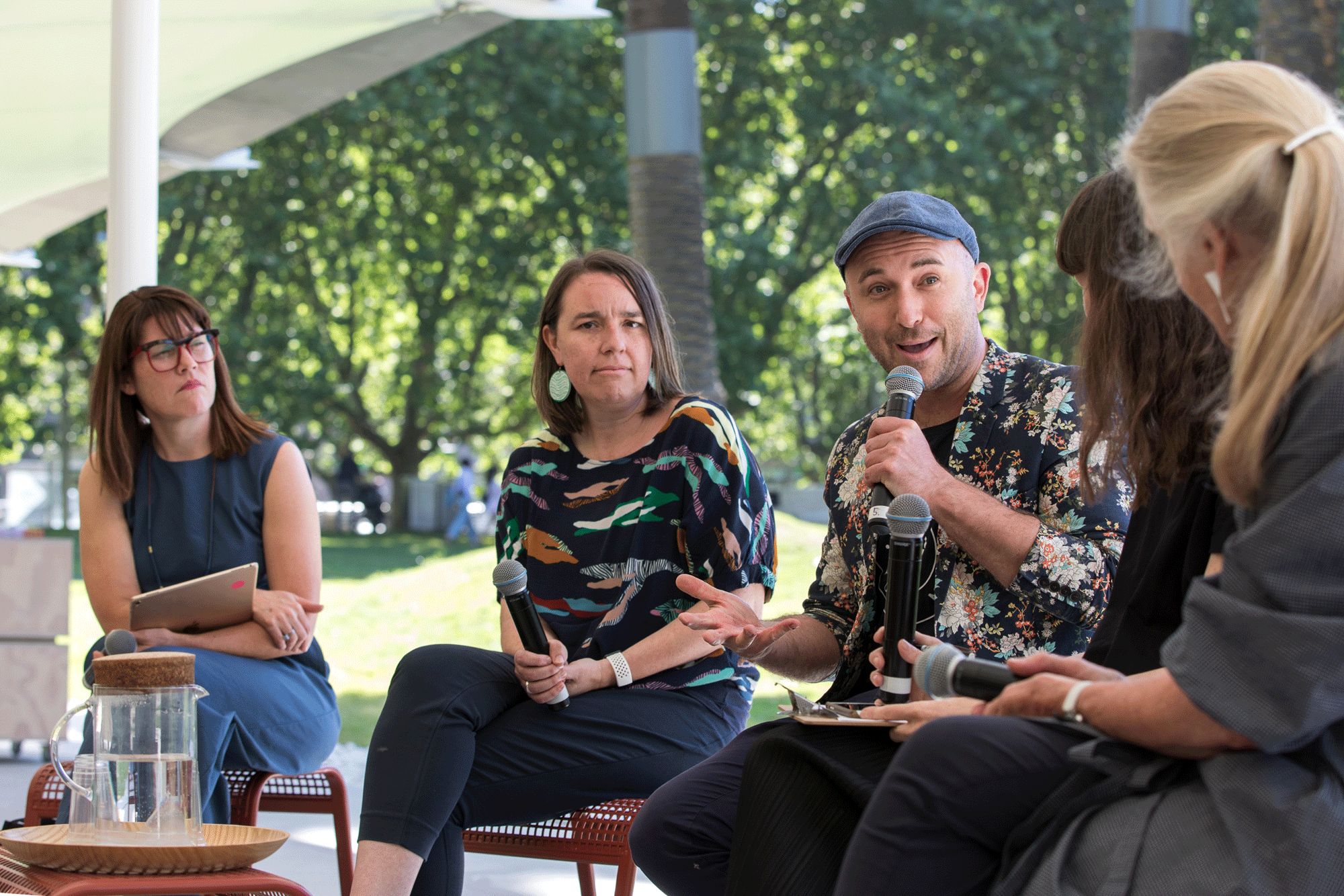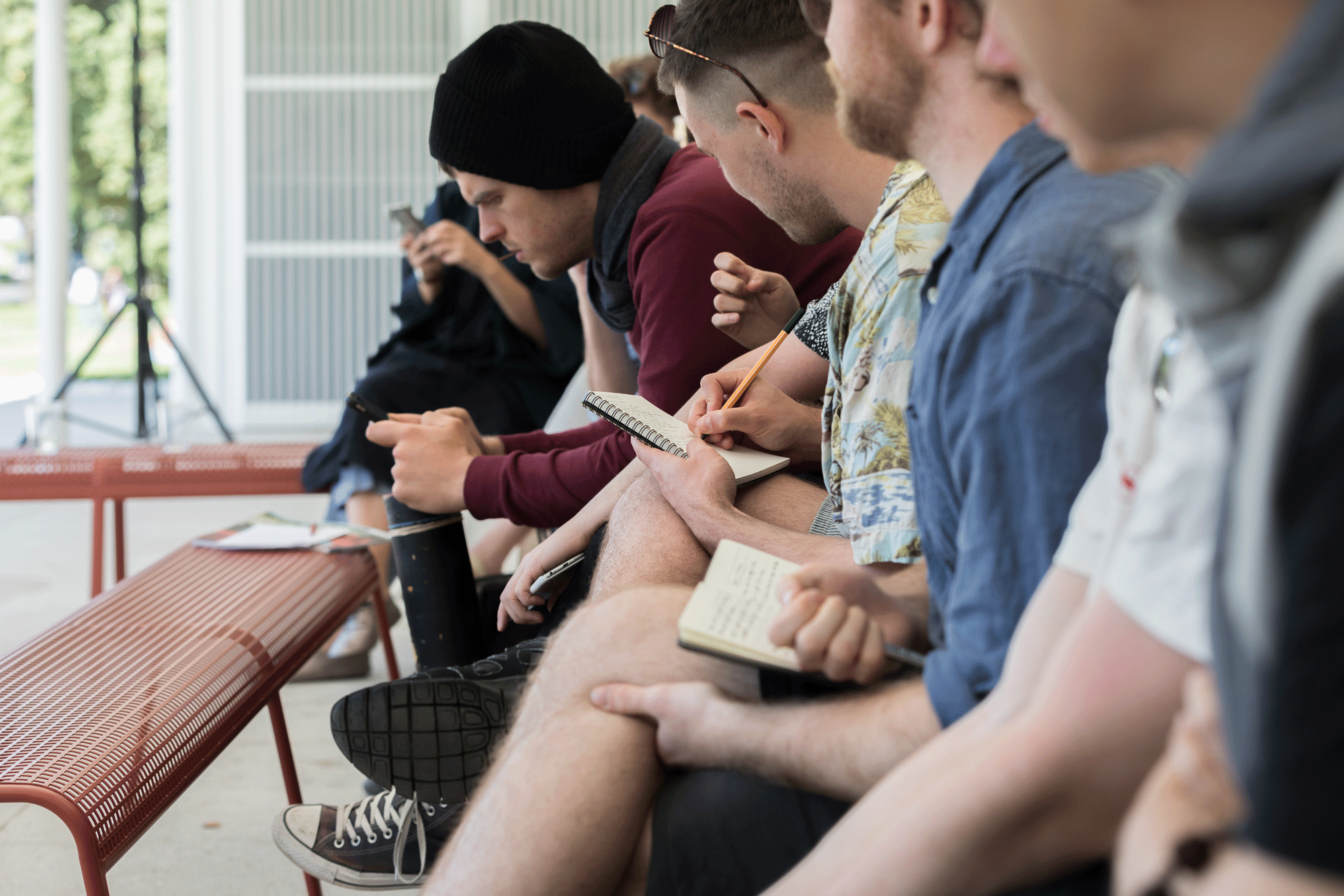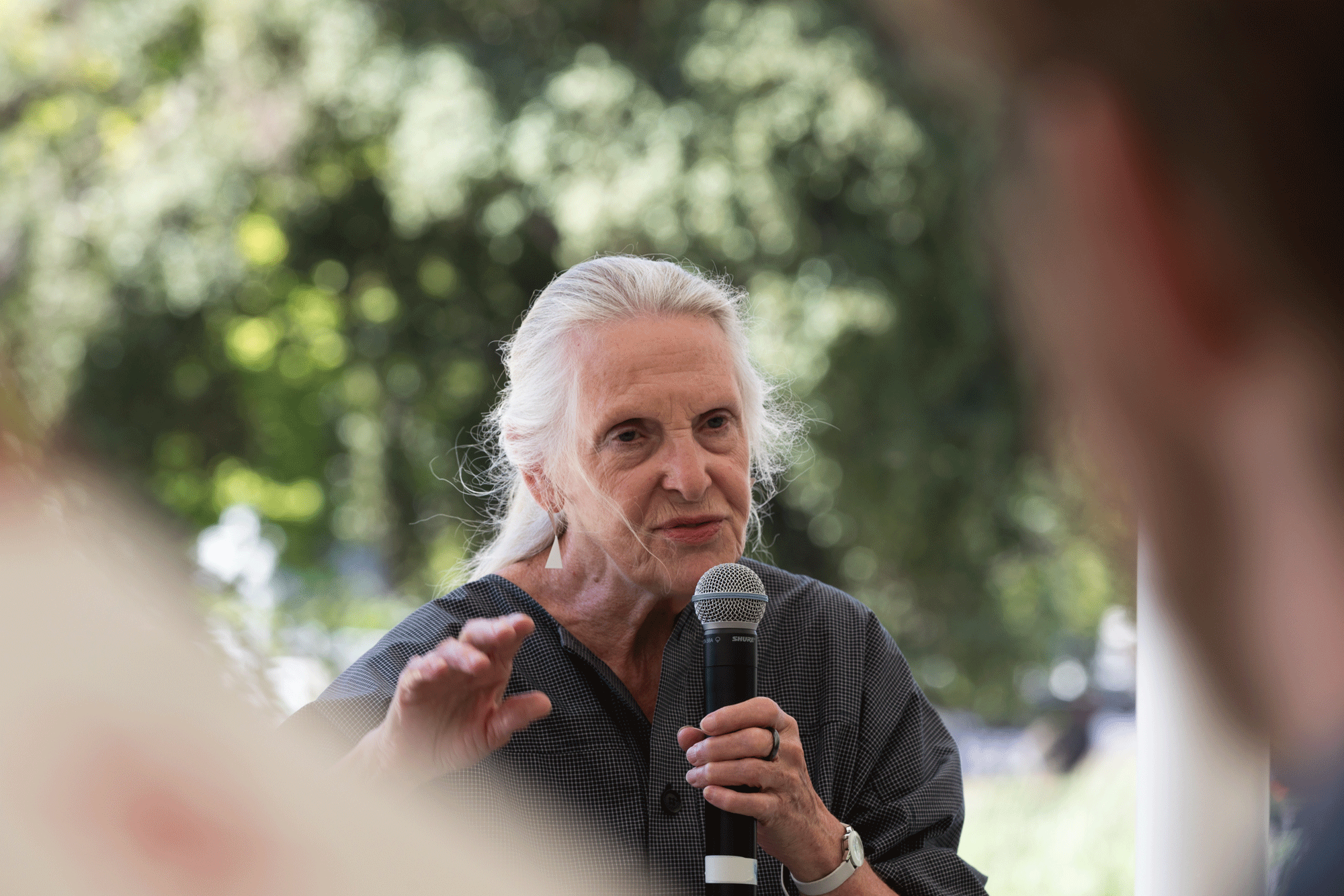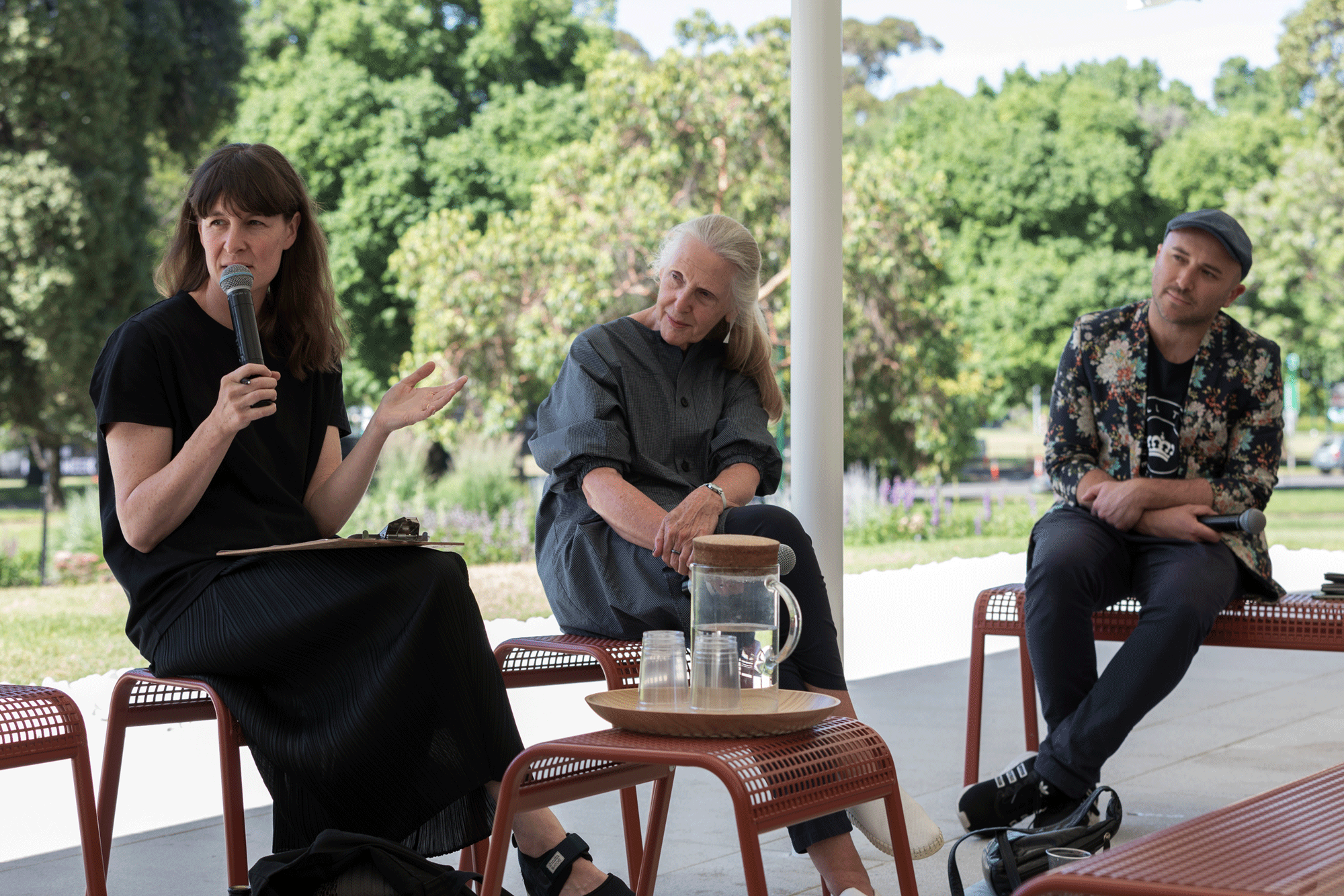Living Closer Together Symposium 2019: (Future) Legacies
What can we do about the climate crisis? What is ‘smart’ about ‘smart cities’? How do we build housing both affordable and beautiful? And what is the legacy we are leaving to the future generations? Following the release of Assemble Papers’s latest print edition (#12: (Future) Legacies – available all summer long at MPavilion), we hosted a series of discussions exploring the intersection of design, action and community. For those who couldn’t attend, here’s a short recap of the day.
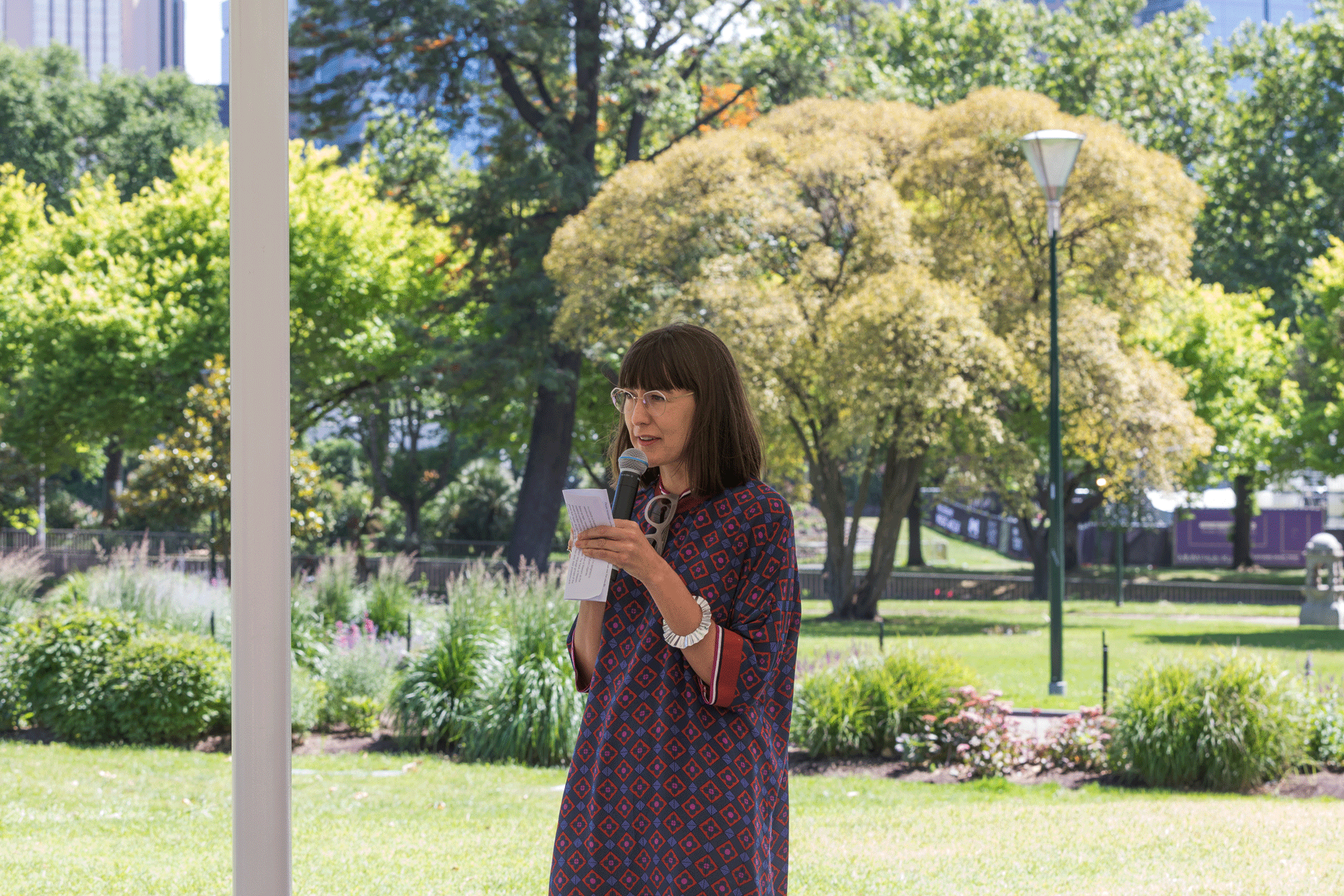


01: Climate Crisis
Jeremy Burke (Impact Investment Group), Stephen Choi (Living Future Institute of Australia), Jack Mitchell (Whadjuk/Balladong/Noongar designer, artist and researcher), Jen Rae (Canadian Métis/Australian artist researcher, Refuge). Moderated by Jana Perković.
Our legacy to future generations will be ever more extreme weather. Can ordinary citizens do anything about the climate crisis? Is there a role for designers in climate response? Jeremy Burke pointed out that superannuation is the sleeping giant of Australia. Understanding what your super fund is doing on your behalf, and where it is investing your money, will take about an hour and give you a very powerful tool for change. After one’s home, superannuation is usually our second-largest asset. Dr Jen Rae spoke about how the Council of Aboriginal Elders is a social structure – a decision-making body – born out of climate change, the seawater rise in Western Australia many years ago, and used that as an example of the need for new social structures when our habitat changes. And architect Jack Mitchell urged designers to develop a relationship with our environment and nature, noting that respecting land was not something innate and exclusive to Aboriginal Australians.
02: Citizen-led Housing
Jessie French (creative producer & strategist, 122 Roseneath St resident), Alexis Kalagas (ex-Urban-ThinkTank), Jessica Leslie (Murundaka Co-housing Community), Tim Riley (Property Collectives), Brighid Sammon (DELWP). Moderated by Alexis Kalagas.
Co-operatives, community land trusts, regulated rents, new forms of home ownership: around the world, new housing models are being designed and tested. As we are facing an affordability crisis, coupled with the loss of faith in building quality, it is time to consider how we can square the circle and combine affordability with quality. What good ideas should we be considering, and how can we test them in practice? Led by Alexis Kalagas, this dynamic discussion opened up to a variety of ideas on how housing can be developed, designed and managed. Alexis brought up Zurich as an example of a city that has managed to scale alternative housing models: 25% of the housing in the city is delivered by non-profit co-operatives, and Zurich has committed to raising that number to 30 percent. Tom Alves urged Melburnians to think how our own housing could be appropriate to our needs. Finally, Brighid Sammon pointed out that citizen-led development is not only about the residents: we should all think about how we can support developments we believe in.
03: Innovation City
Philippa Abbott (Today), Paul D’Urso (Anatomics), Nic Whyte (Art Processors), Greg Williams (Dex Audio). Moderated by Penny Barnes (Arup Cities).
From data tracking to 3D printing, new technologies are present more than ever in our cities. Instead of with fear, how can we engage them for a better future? Led by the amazing Penny Barnes, this dynamic discussion explored the effect of technologies on Melbourne – from industrial manufacturing to ‘smart city’ technologies, from university ‘fab labs’ to new digital manufacturing techniques – all while considering Melbourne’s significant industrial legacy. Nic Whyte spoke about the effect of Mona on Hobart: according to him, due to its innovative use of technology to collect data and use it to reshape the user experience, Mona has often been referred to as a micro-version of a ‘smart city’. Paul D’Urso, the founder of Anatomics, described his company’s innovative use of 3D printing for the medical industry. Philippa Abbott was critical of the construction industry for its slow uptake of new technologies. “Innovation,” she emphasised, “is the ability to be brave.” D’Urso was emphatic: the biggest bottleneck is currently in governance; this is the industry in most need of innovation. Greg Williams spoke of the changes he’s seen in Melbourne’s Kensington – the shifting dynamic between business and residential and the councils influence over the suburb’s future. He also spoke about local manufacturing and the positive effect it can have on a community.
04: The 21st-century Family
Mary Featherston (Designer), Skye Haldane (manager of design at City of Melbourne), Nicole Kalms (XYX Lab), Tristan Meecham (The Coming Back Out Ball, All The Queens Men). Moderated by Kate Rhodes (RMIT Design Hub Gallery).
For our final panel of the day, benches were pulled closer together into a circle, for a discussion of human-centred design for all ages, genders and abilities. Kate Rhodes led a discussion that asked how we would grow old together, and what sort of city we were leaving to our children. Dr Nicole Kalms found the word ‘legacy’ irritating, while Mary Featherston urged us to see the child as a curious and competent citizen. Skye Haldane, the designer of Australia’s best playground, also noted that it is rare for adults to be able to embrace their inner child and be playful, and that it is the role of public space to provide that opportunity. “Children need the opportunity to experience the world actively and to use all their senses,” Mary concluded. “They need one another, and they need meaningful adults in their lives. It now seems that a lot of children’s experiences are almost totally encapsulated within one family.”
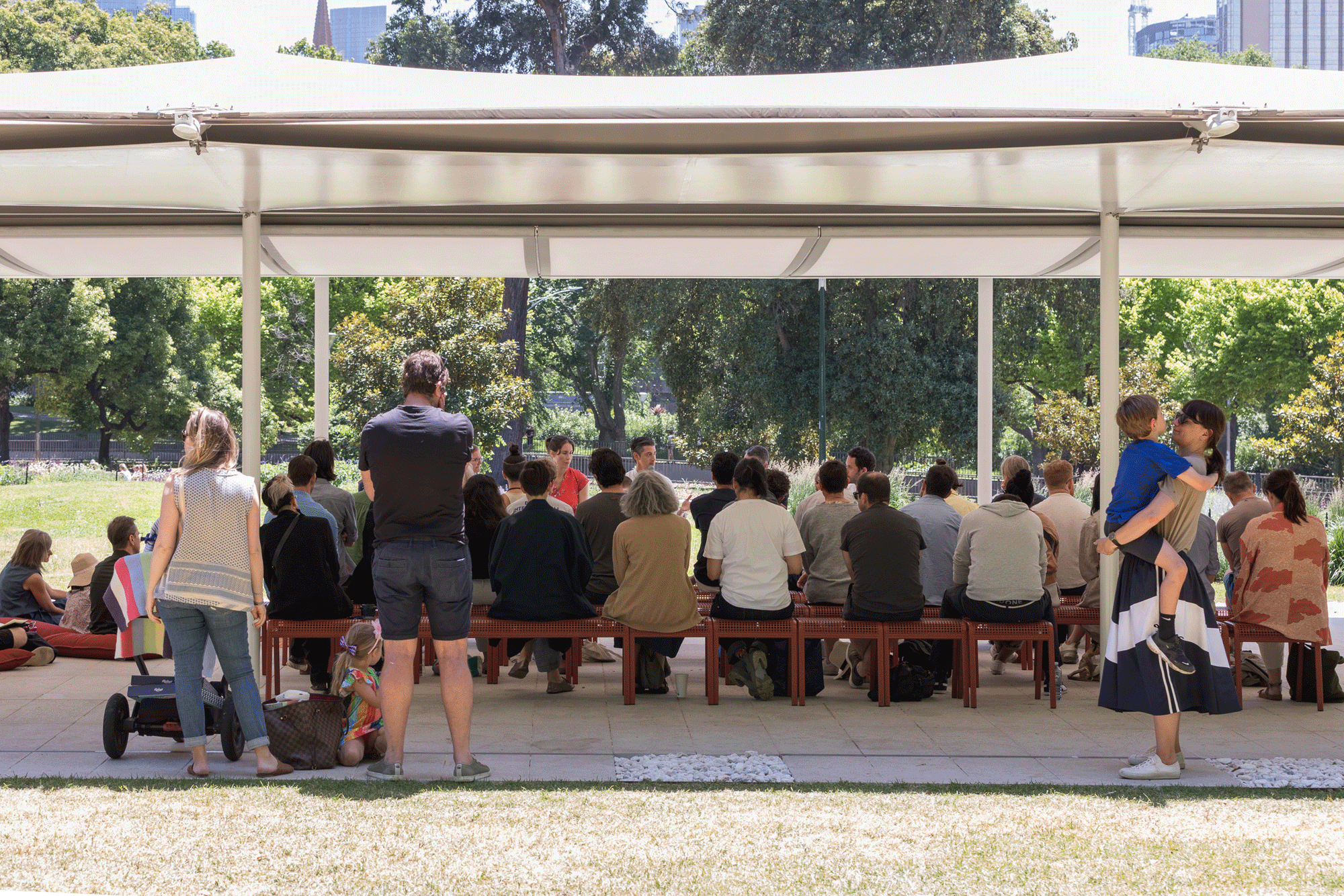
This is just a brief summary of the many fascinating discussions that happened over the day. If anything here has sparked your interest, please feel free to email us on editorial@assemblepapers.com.au


